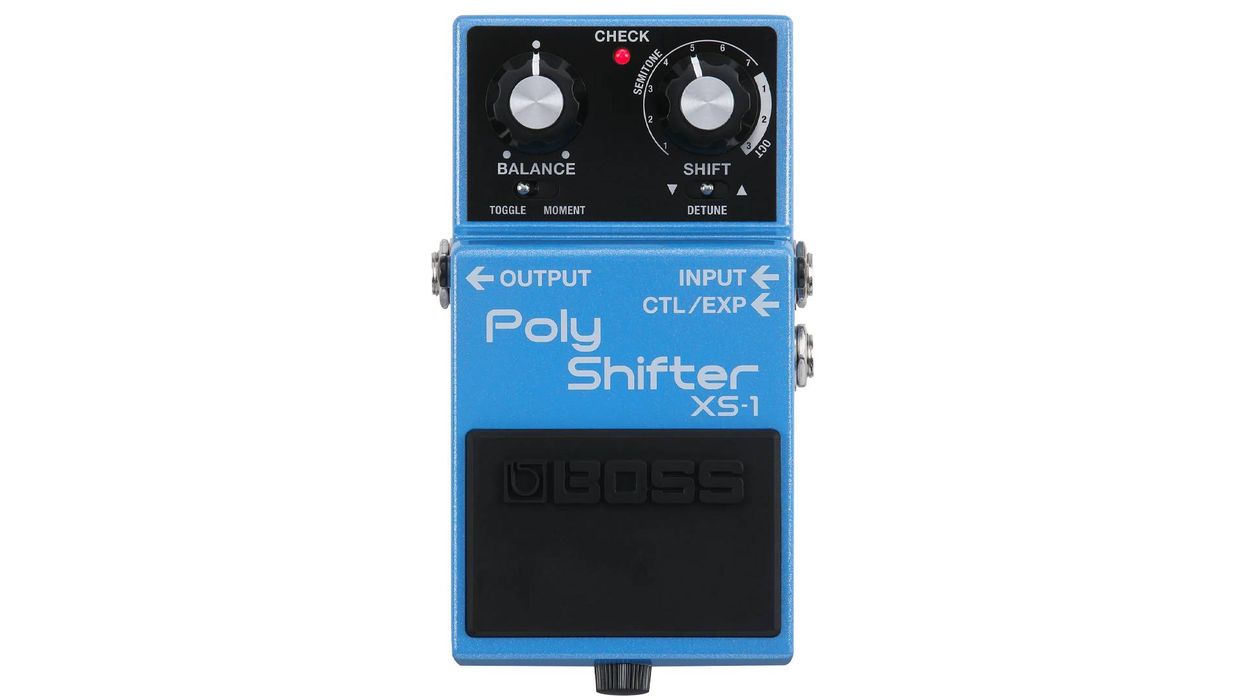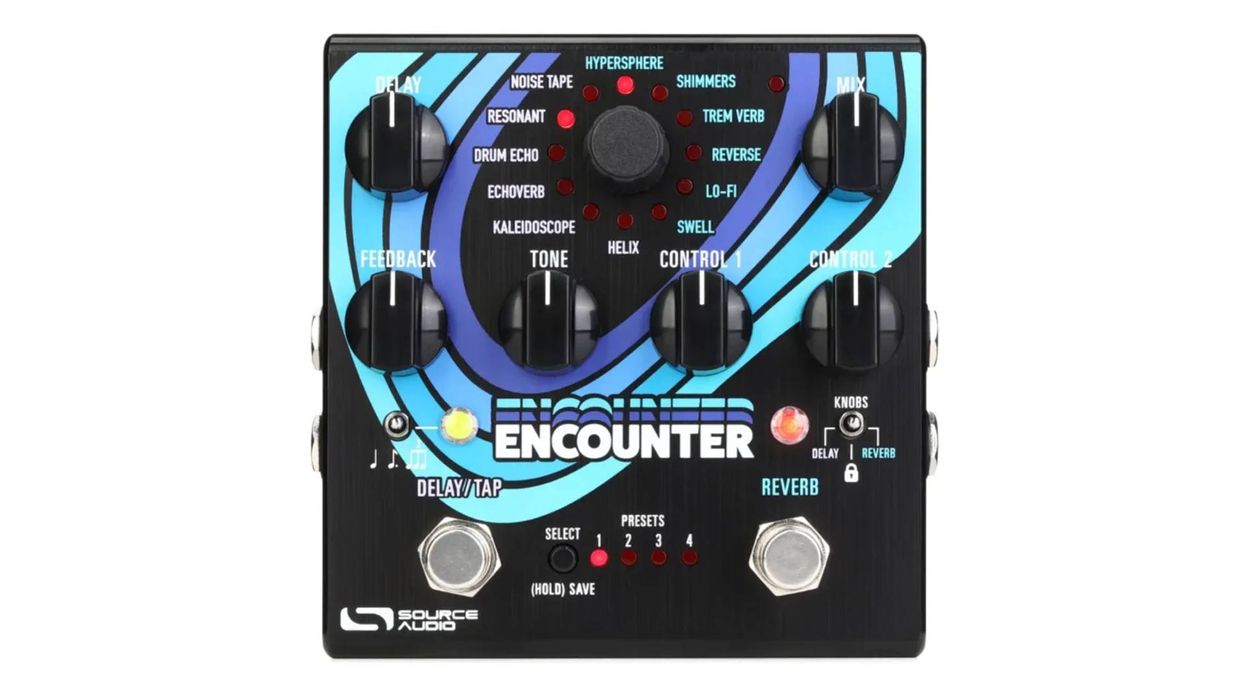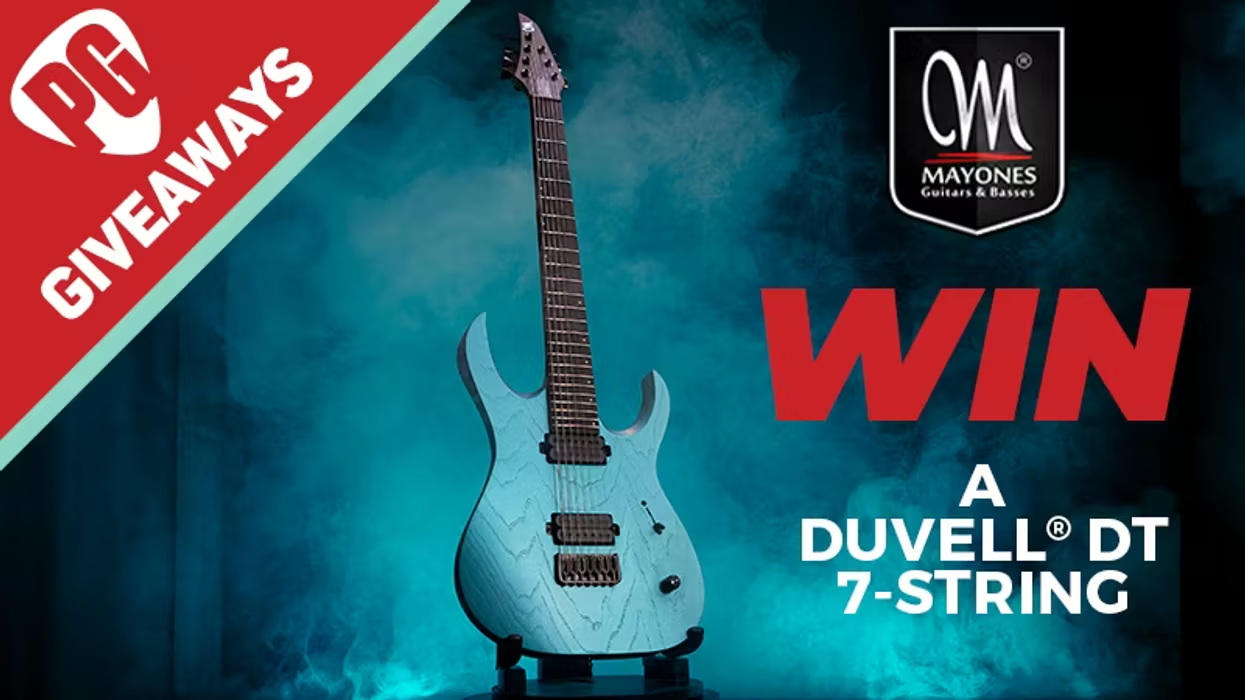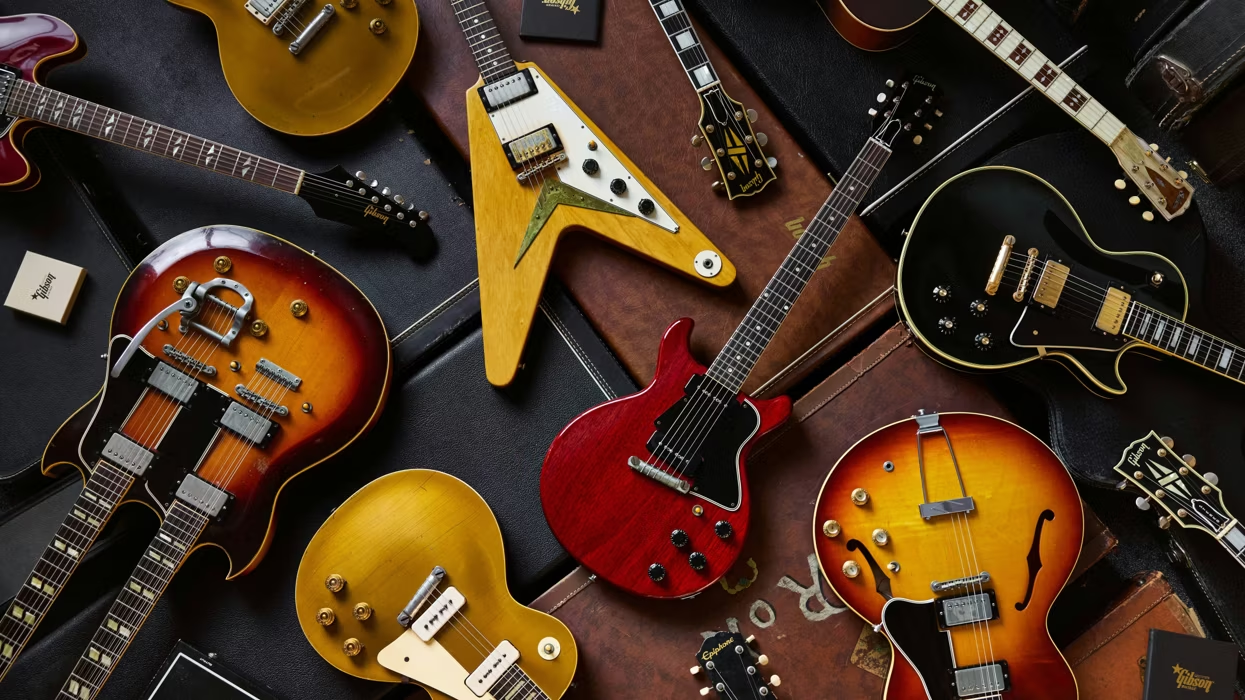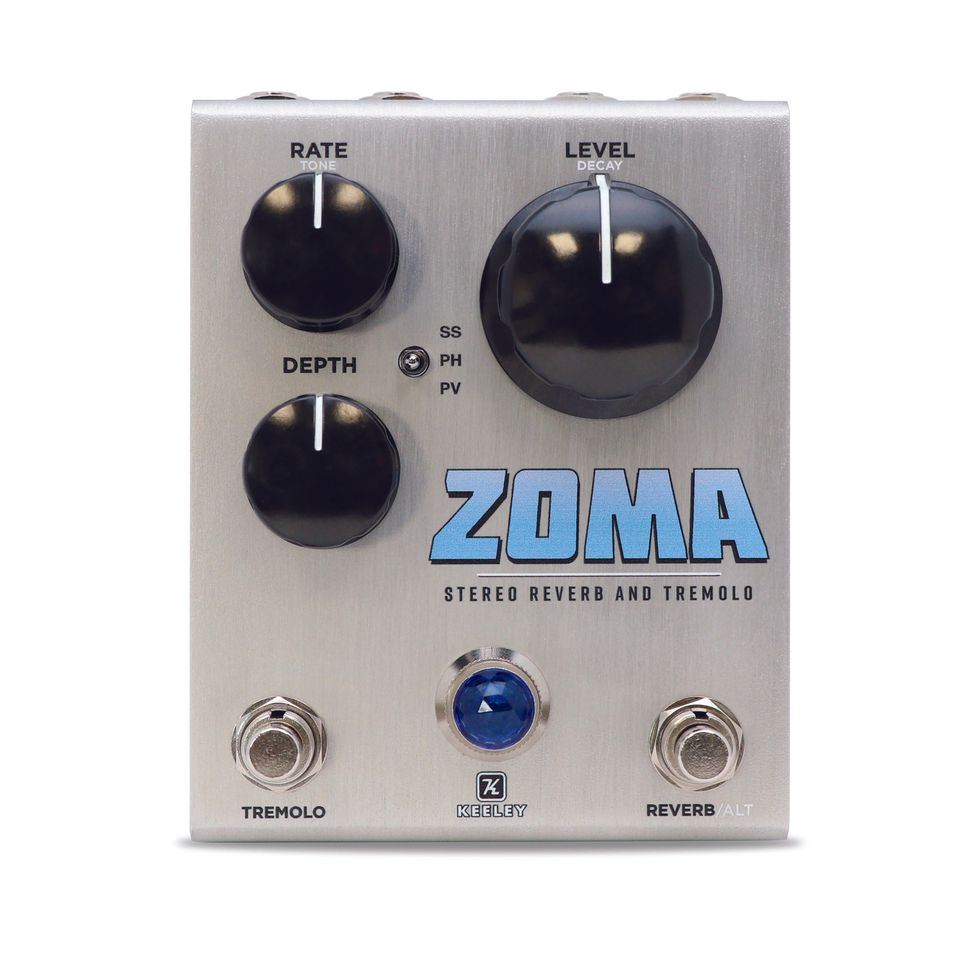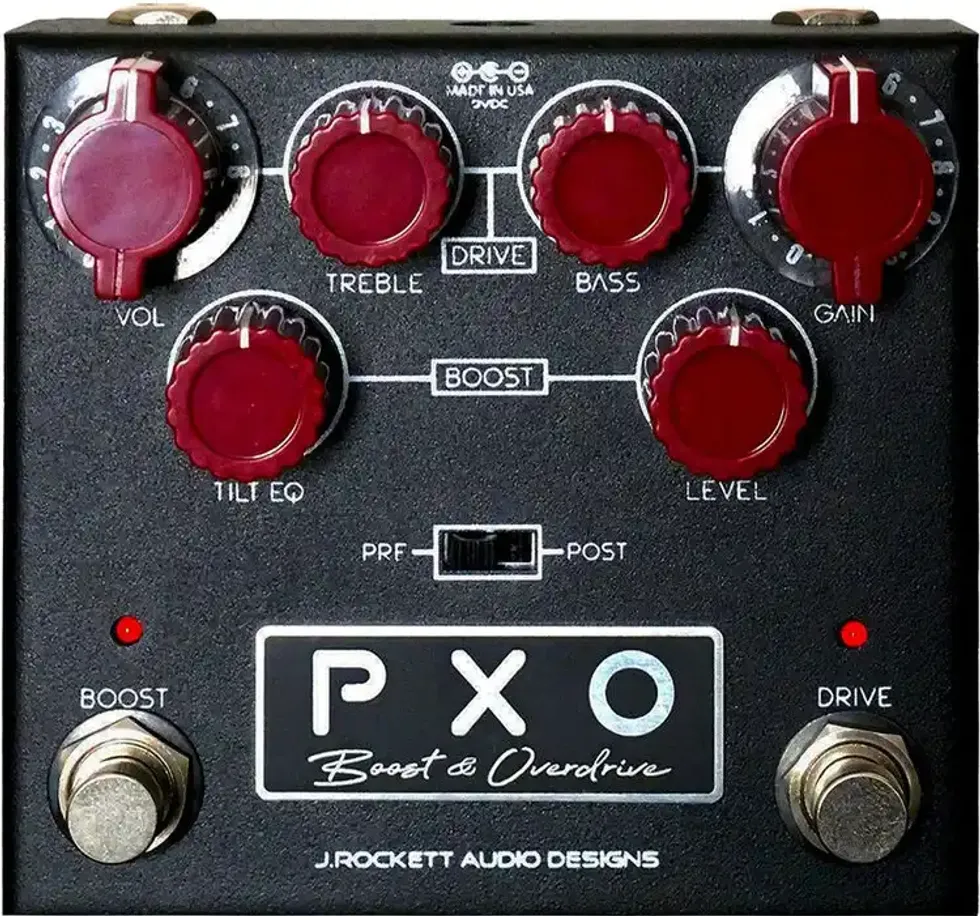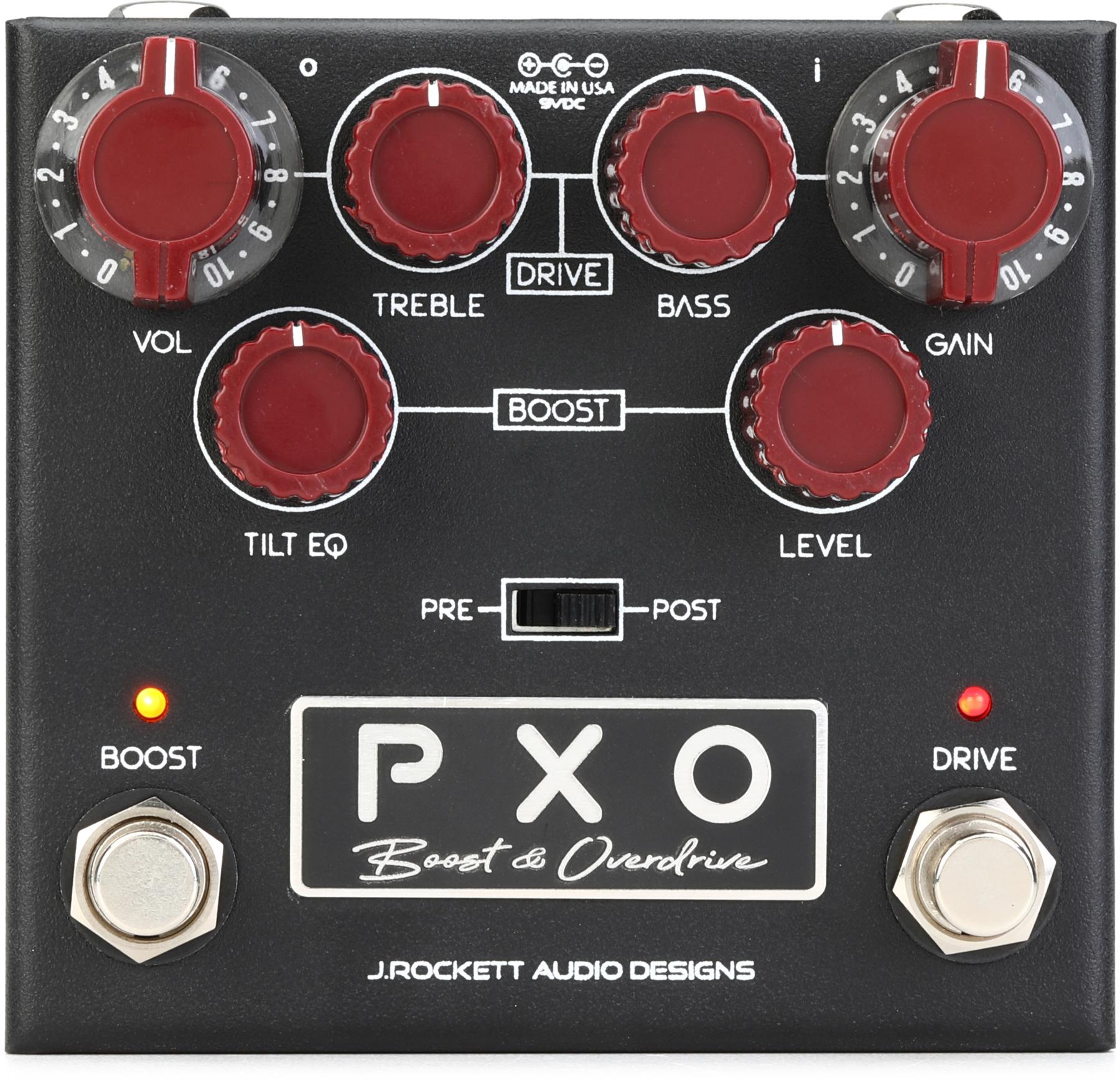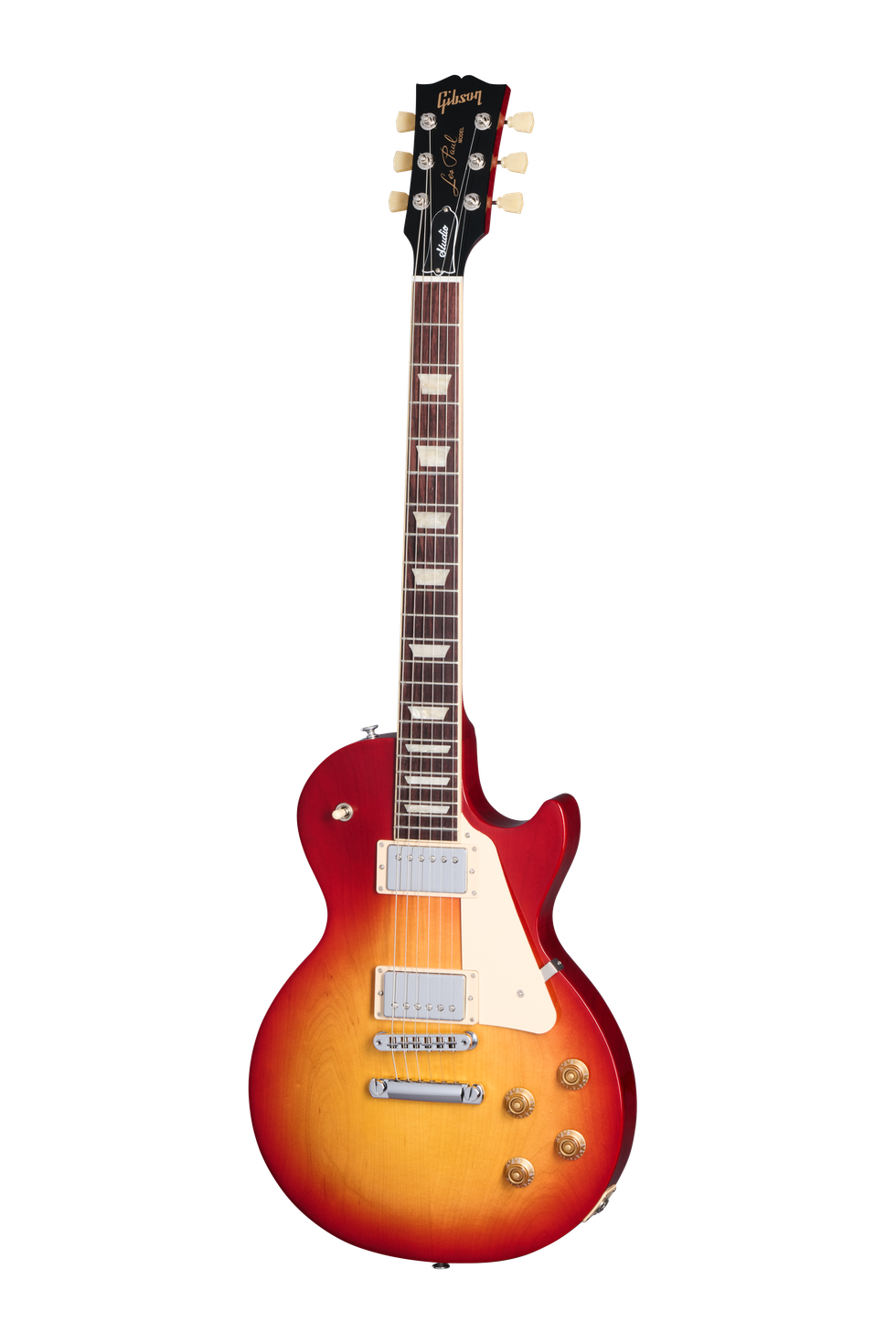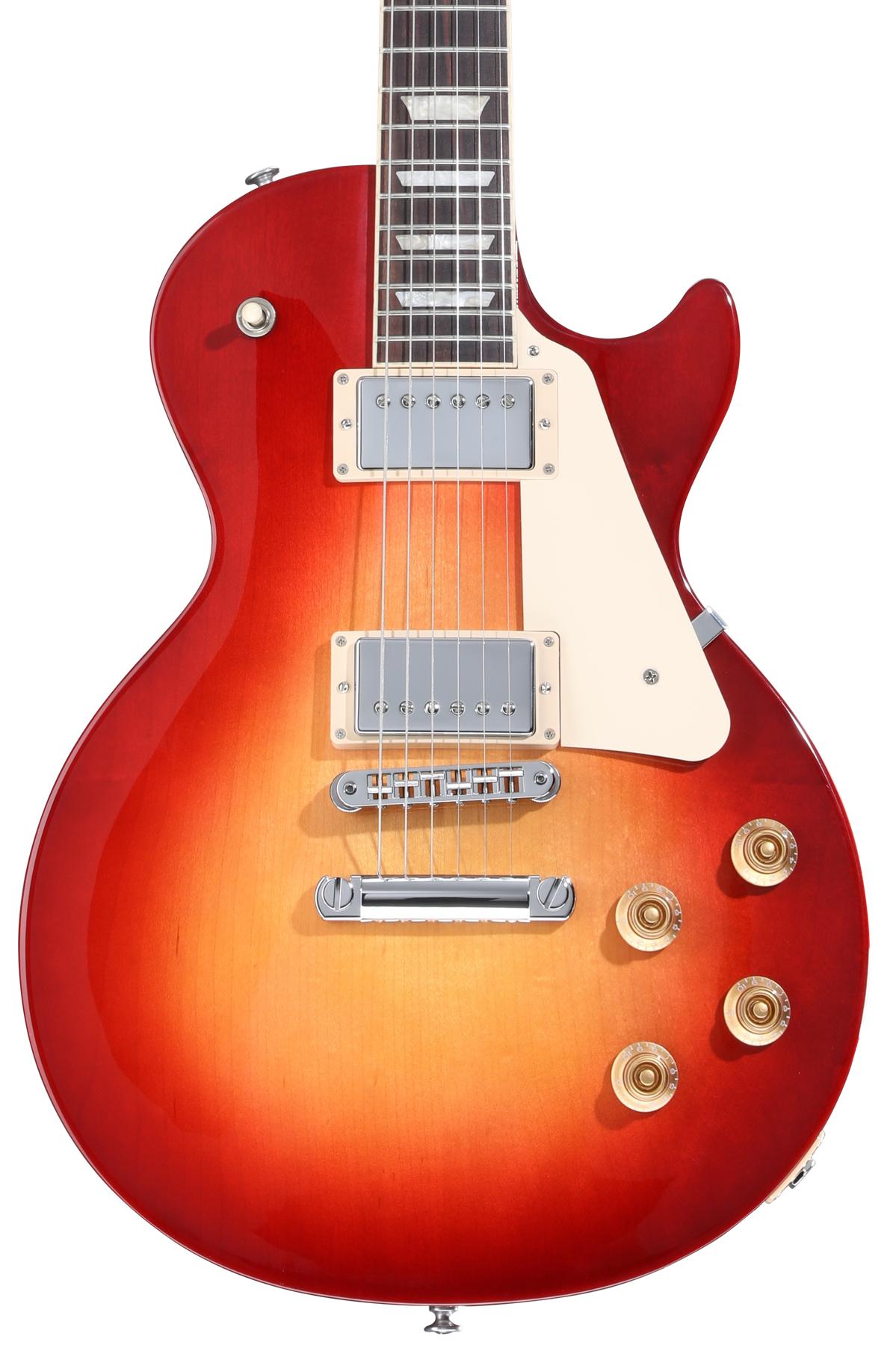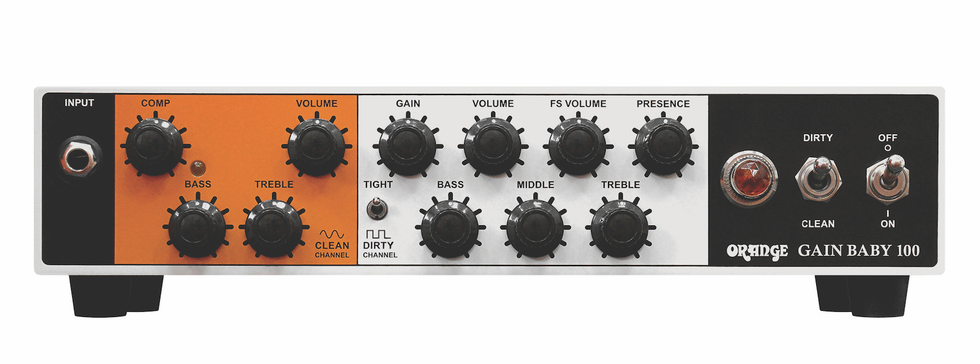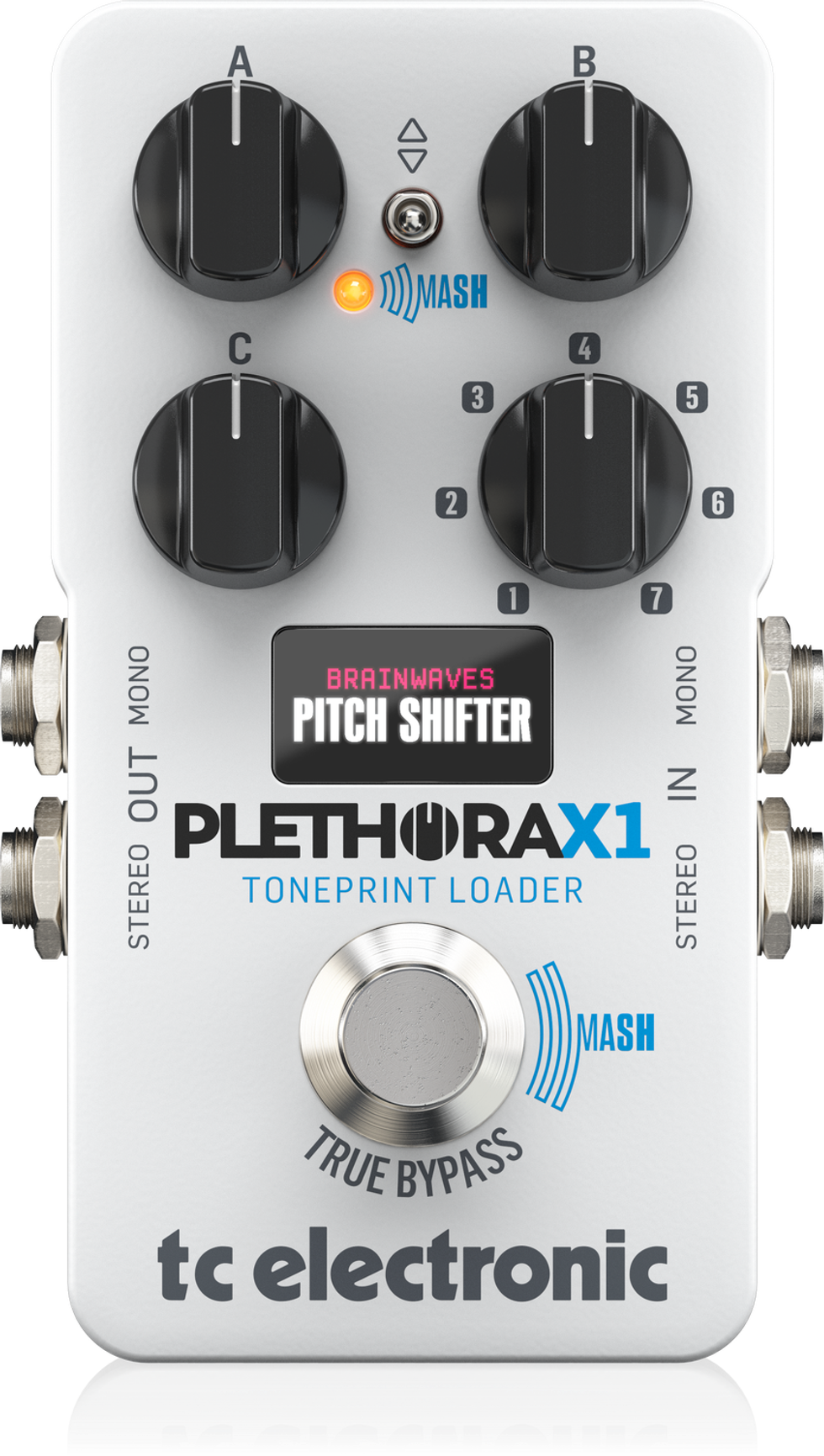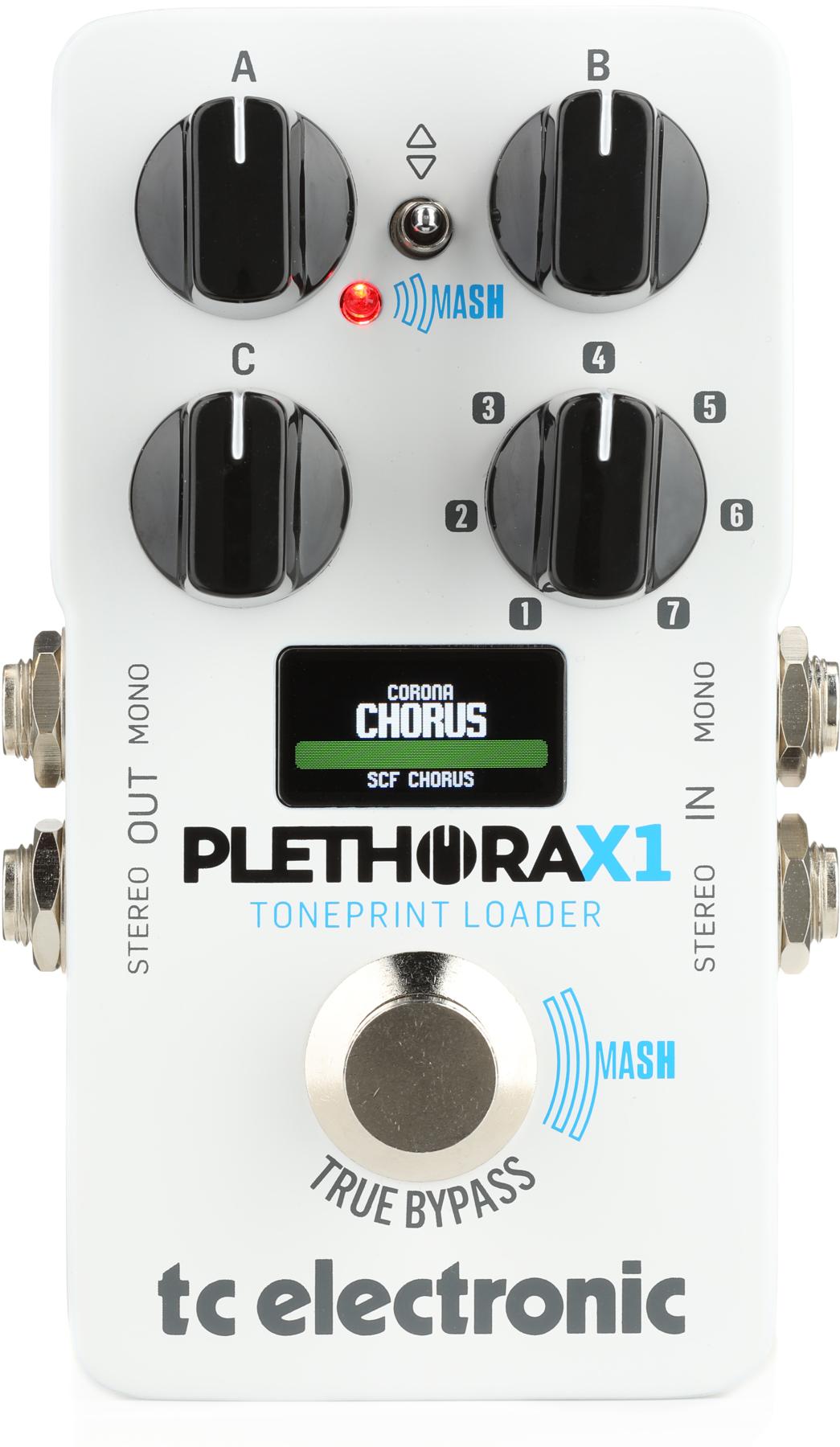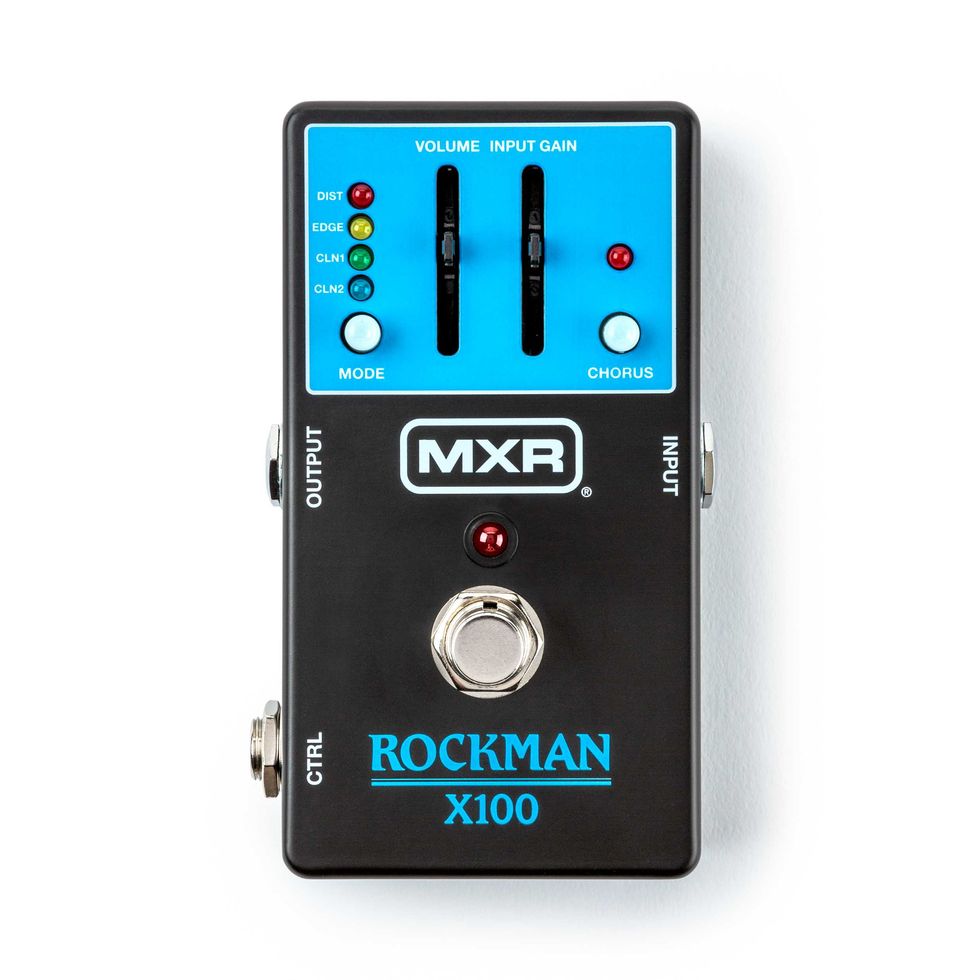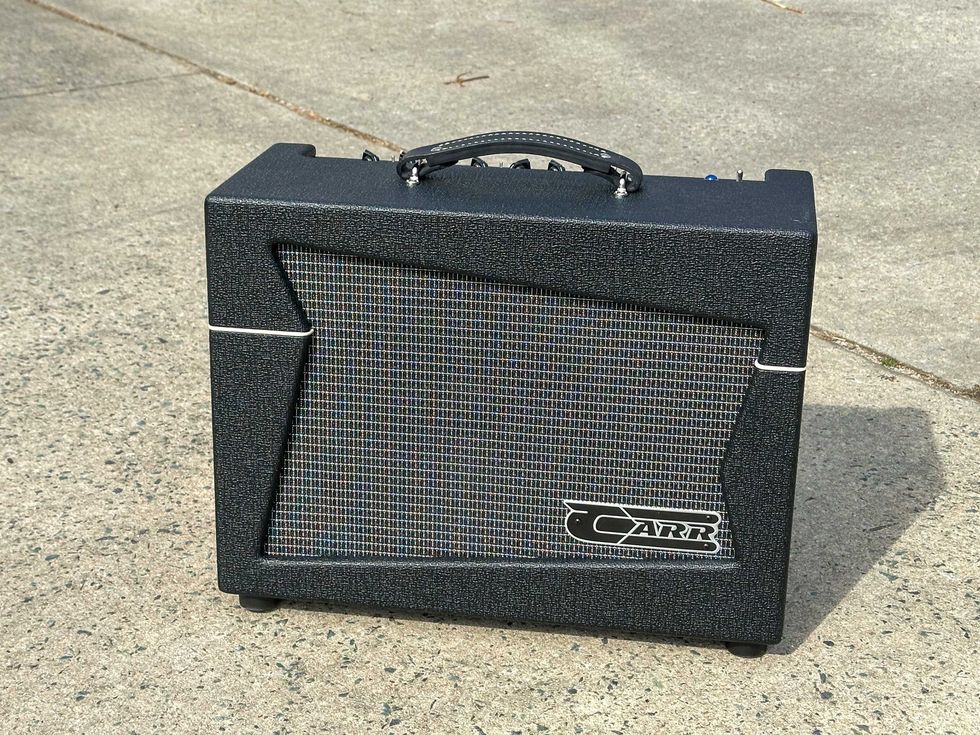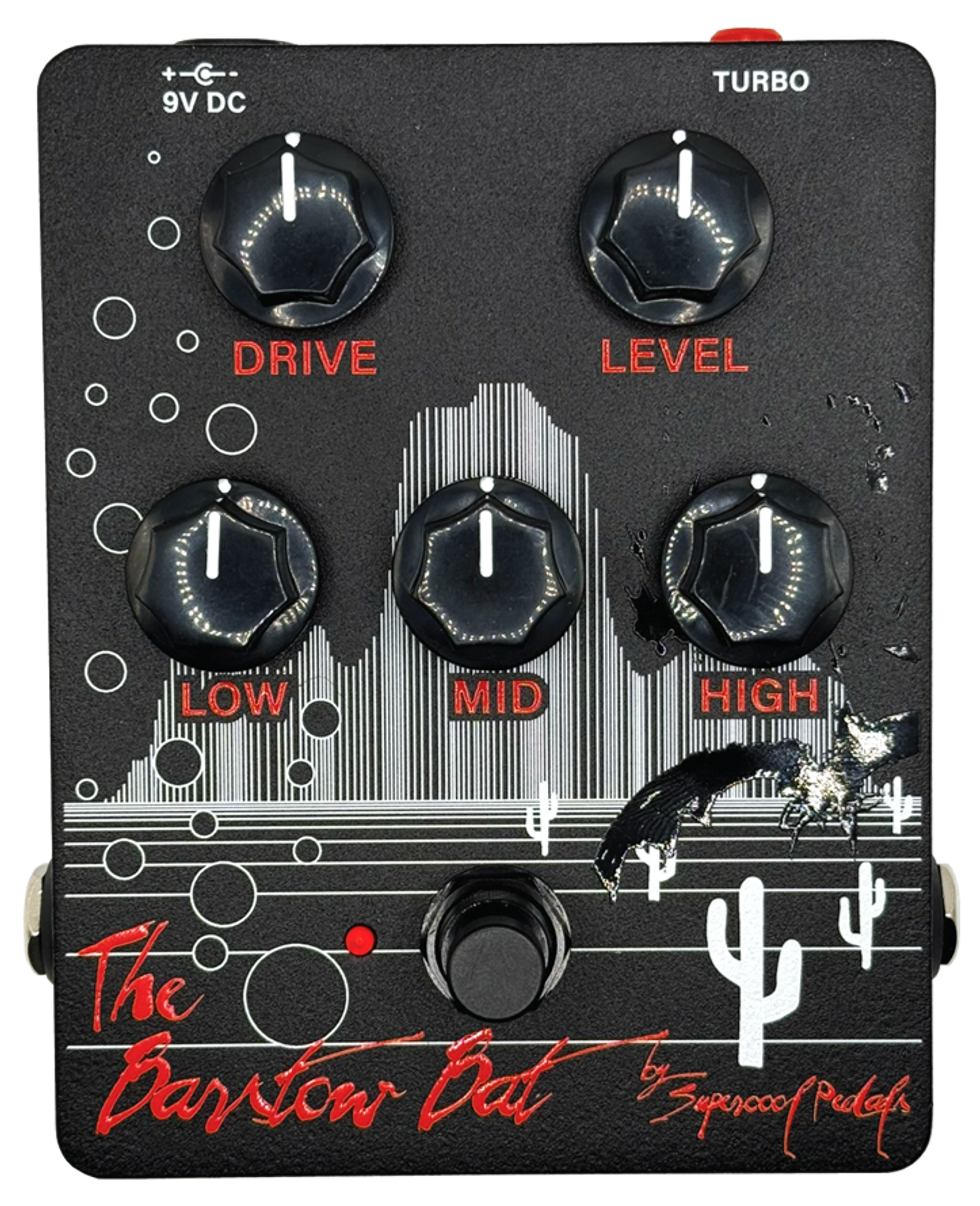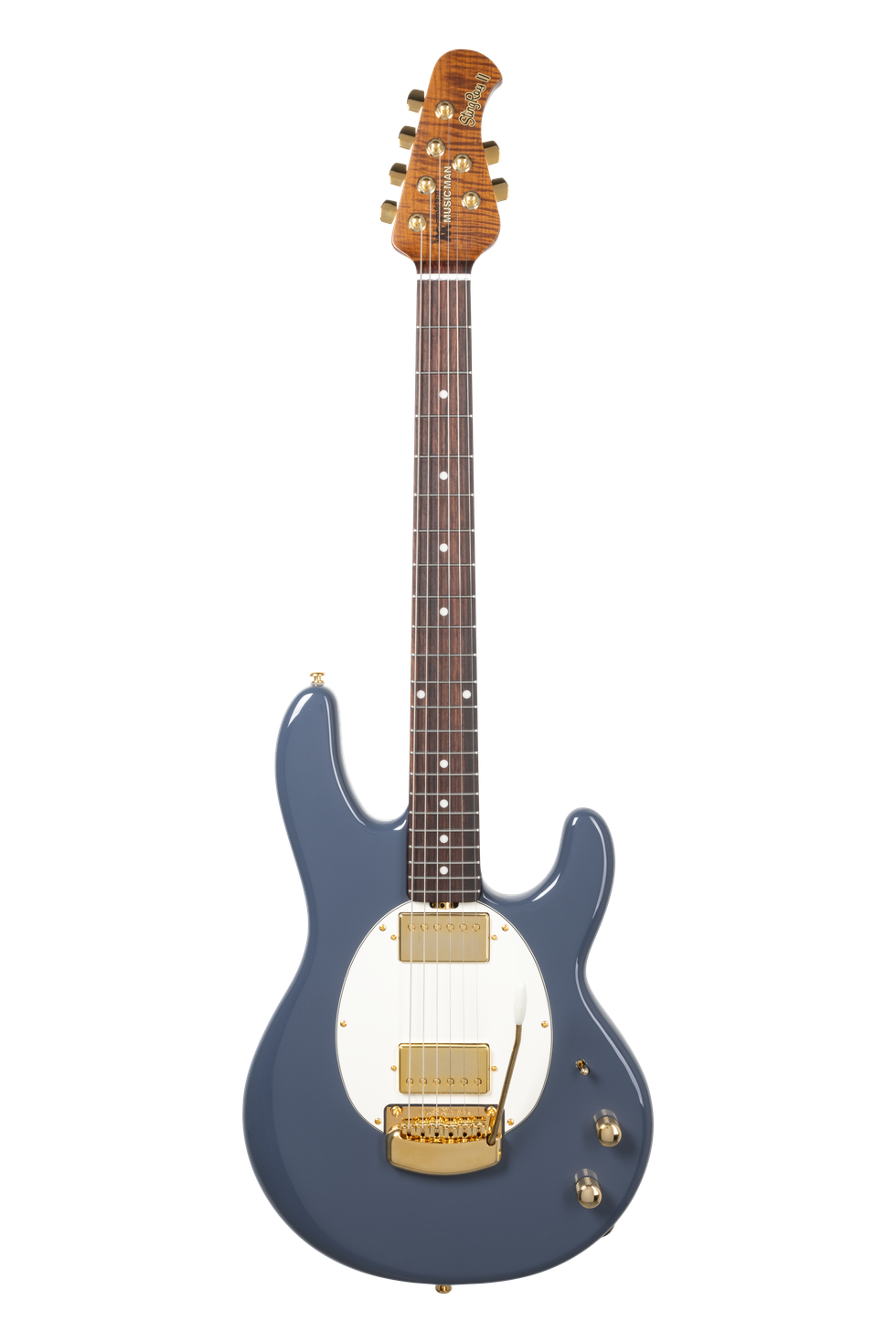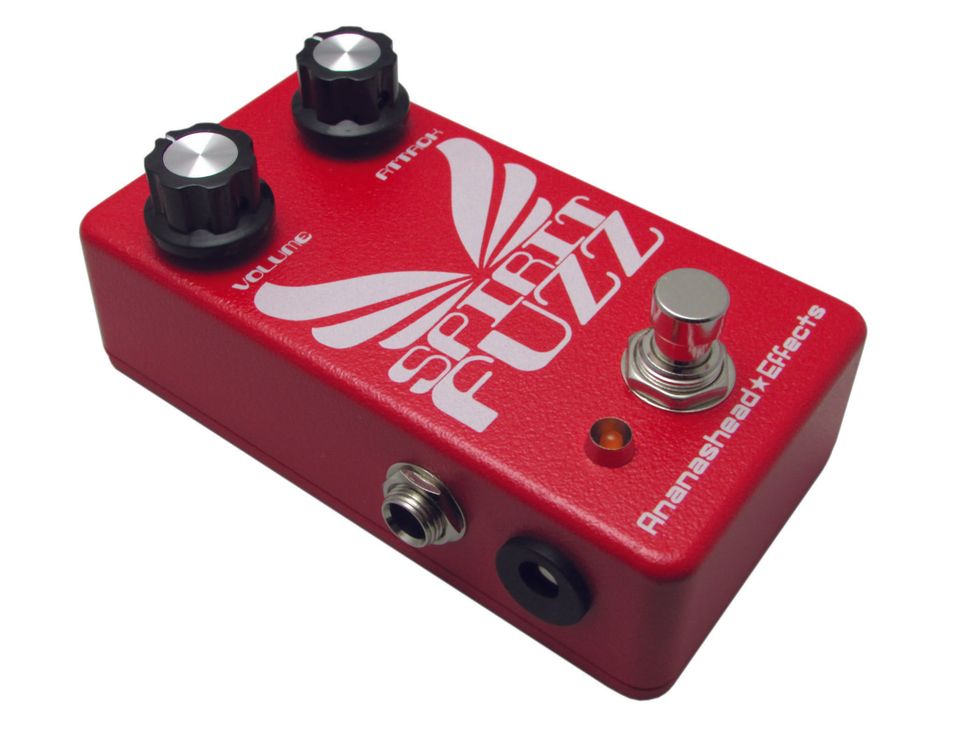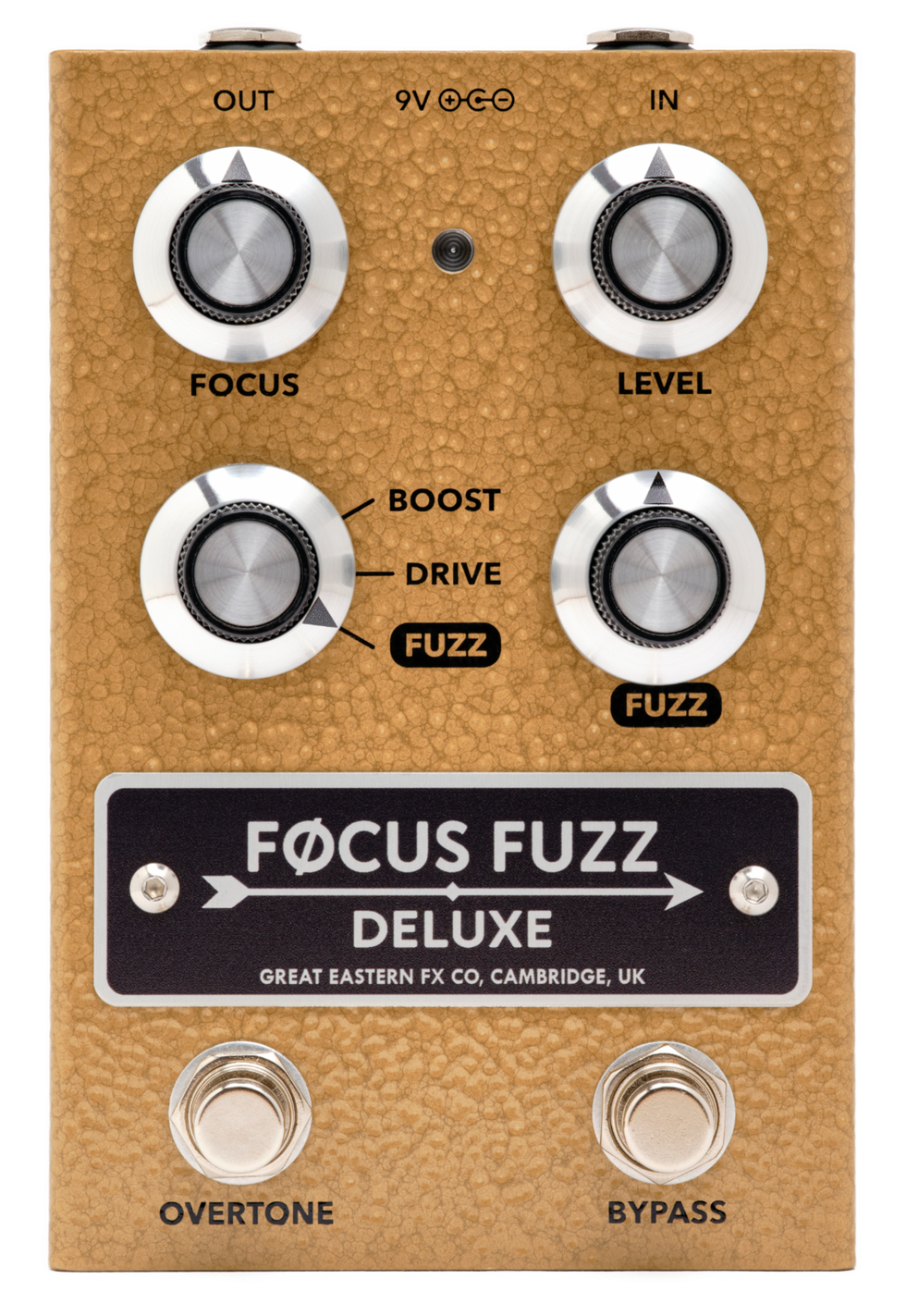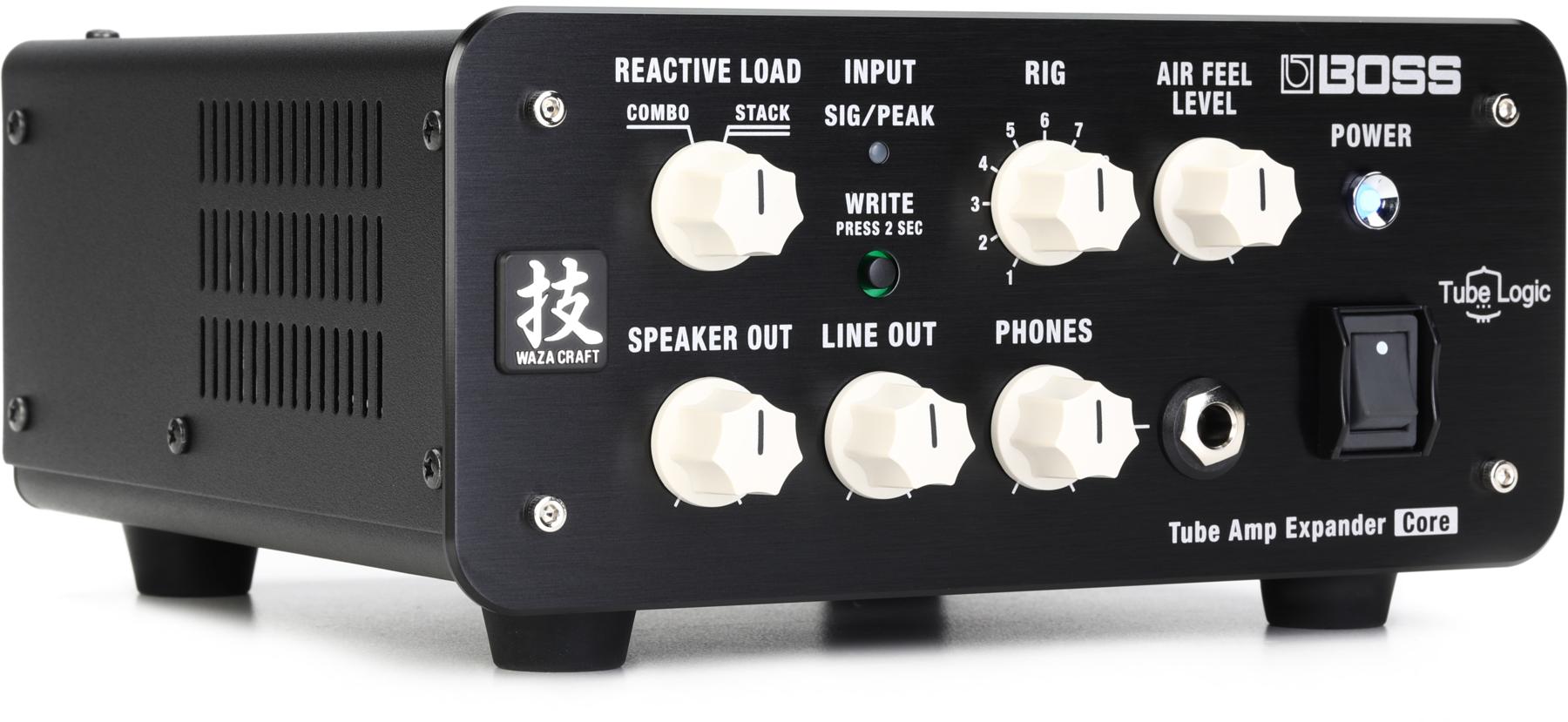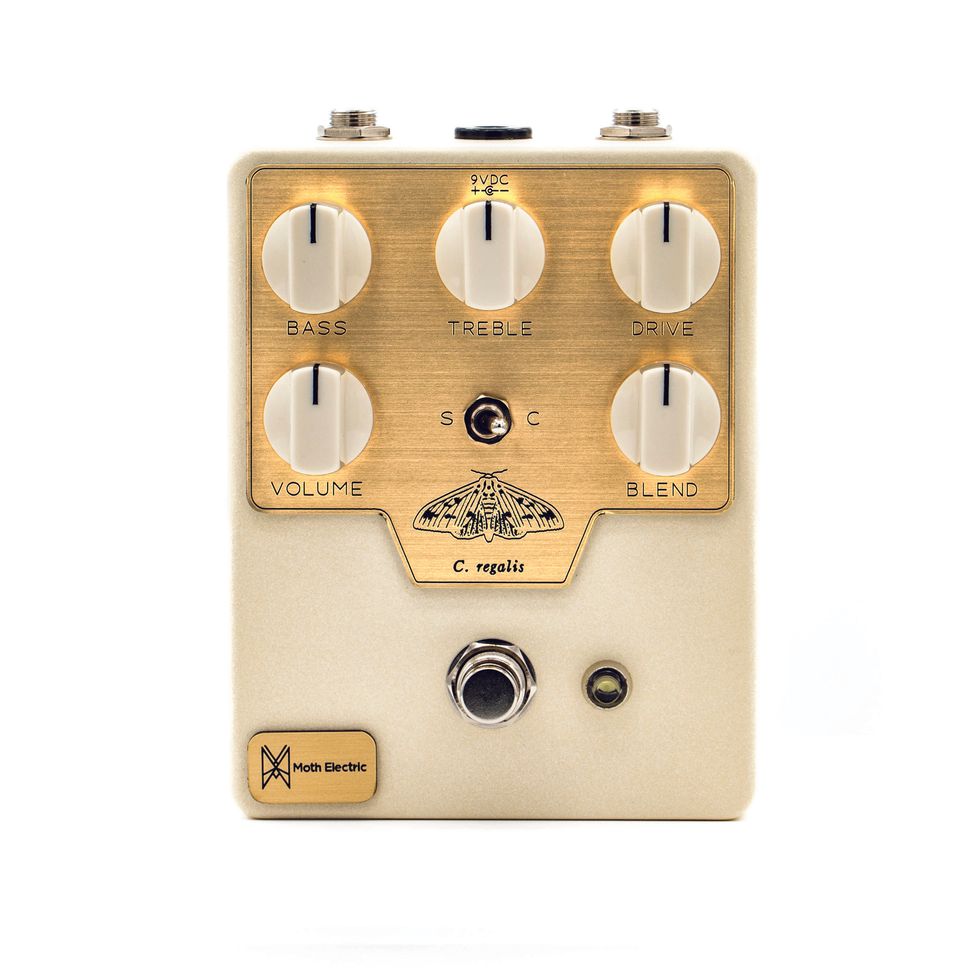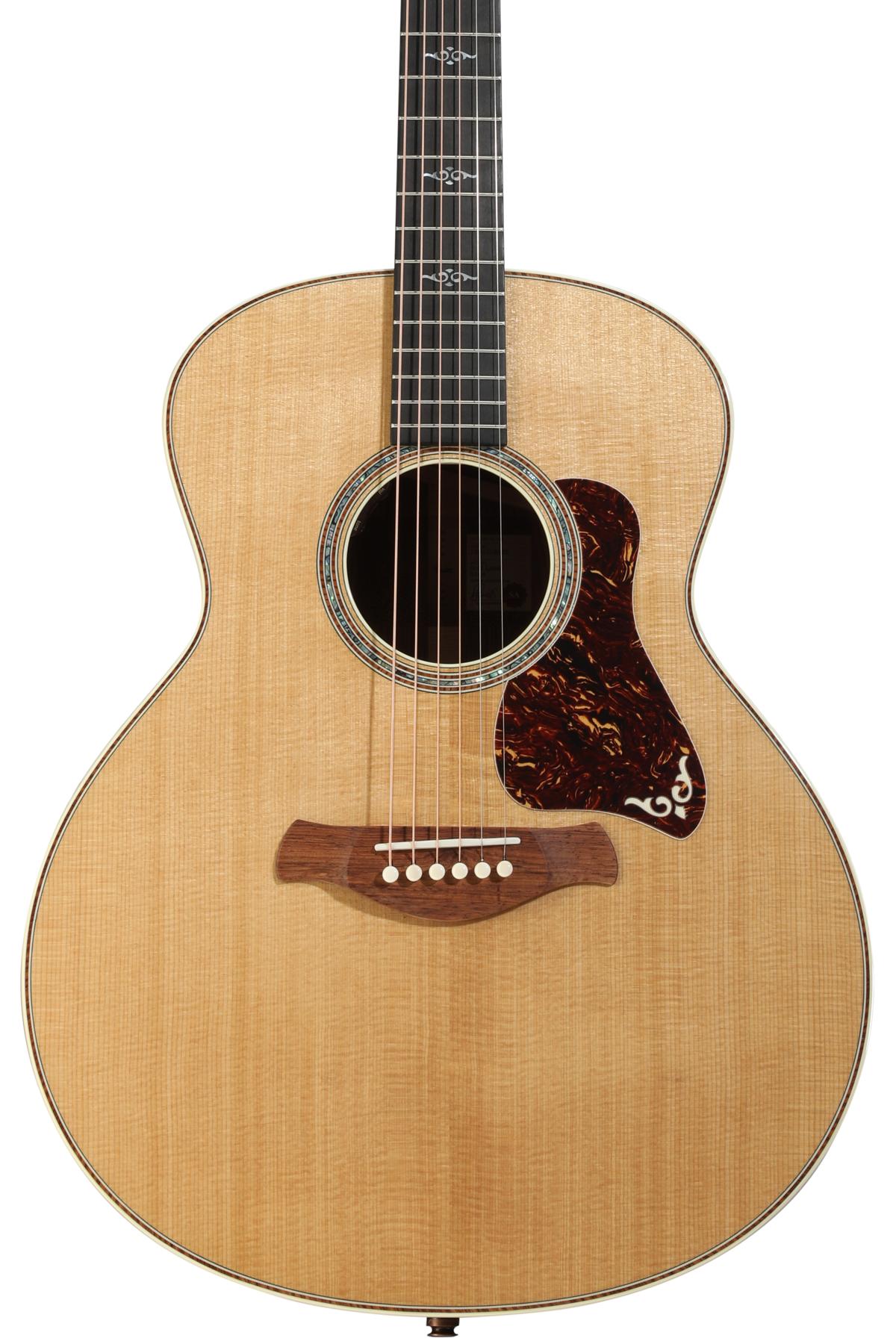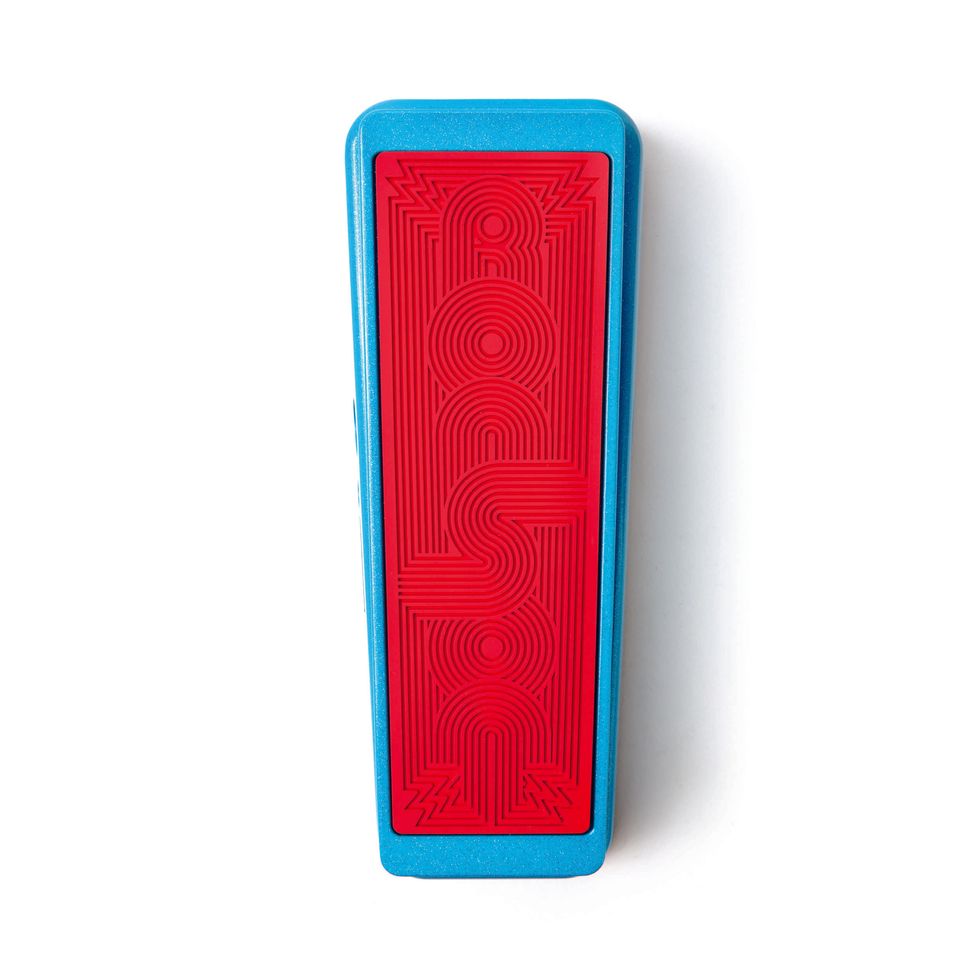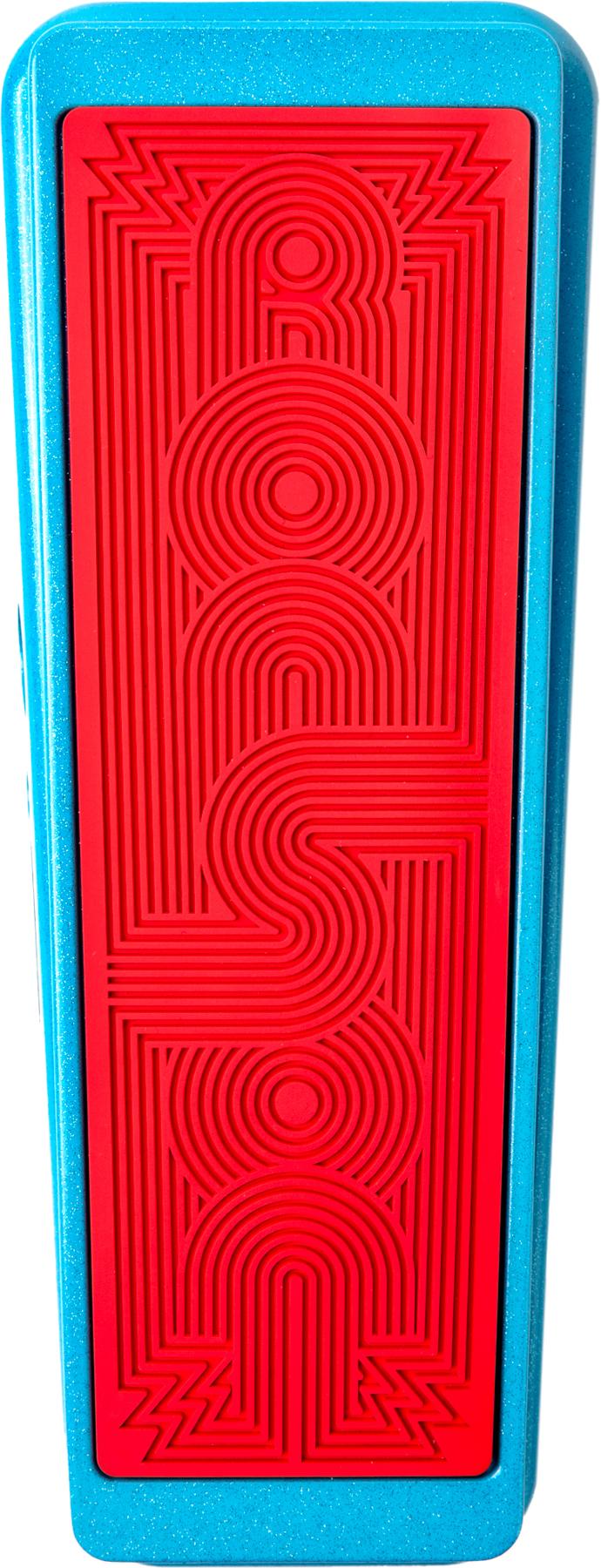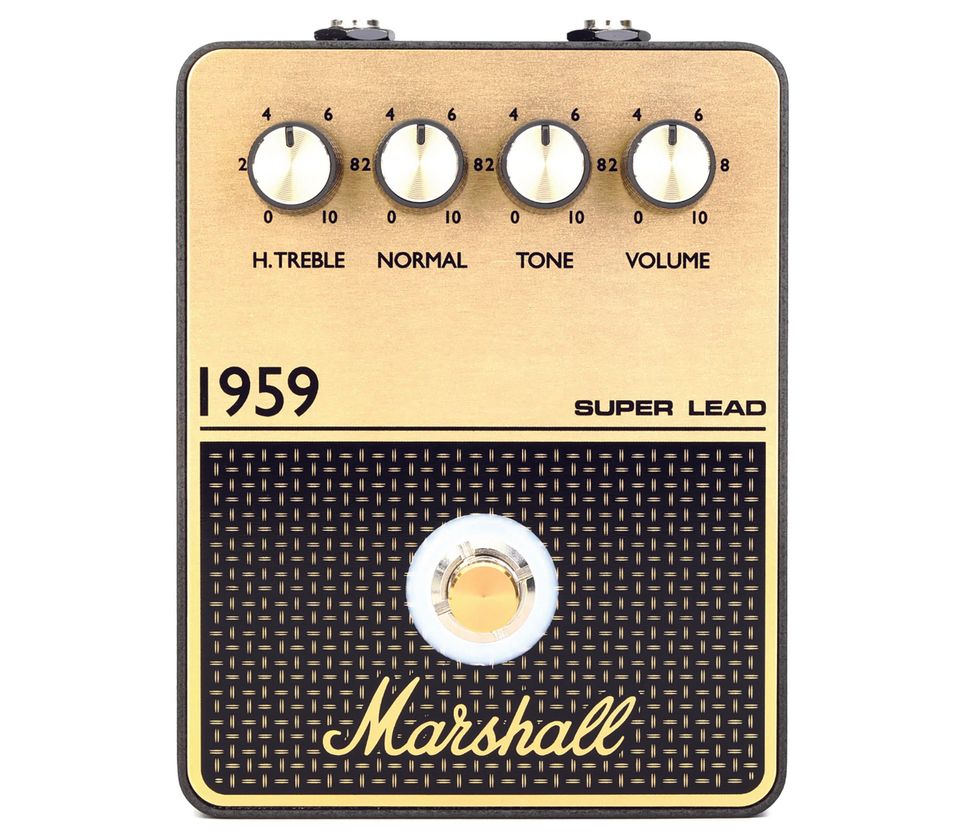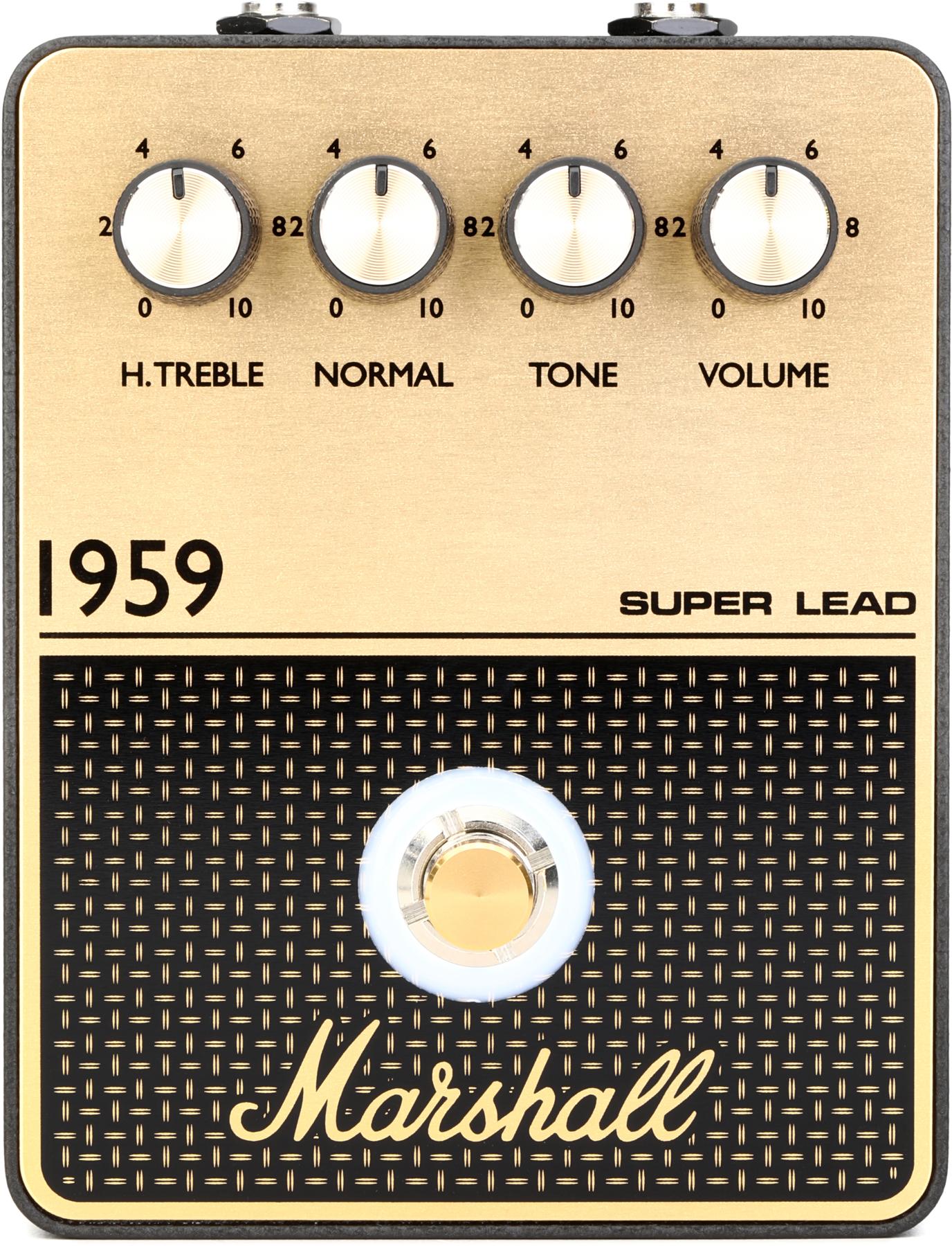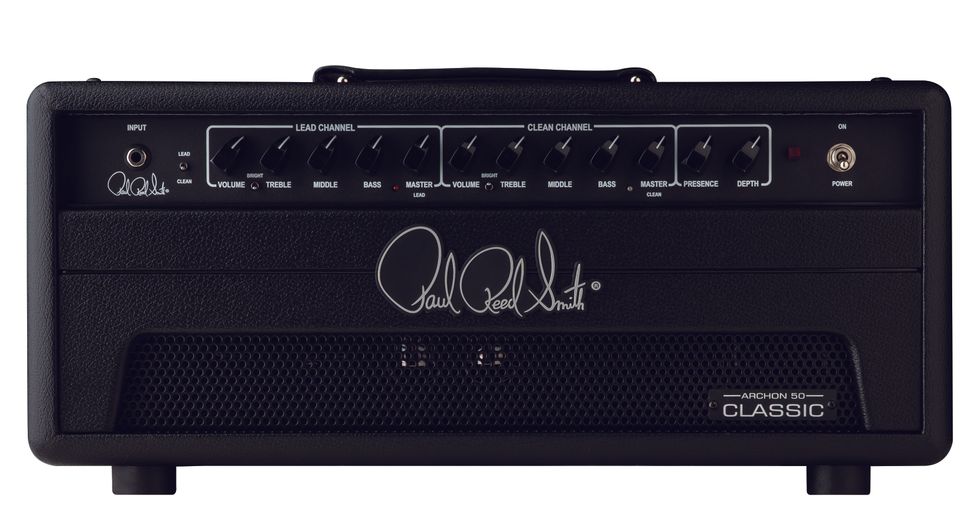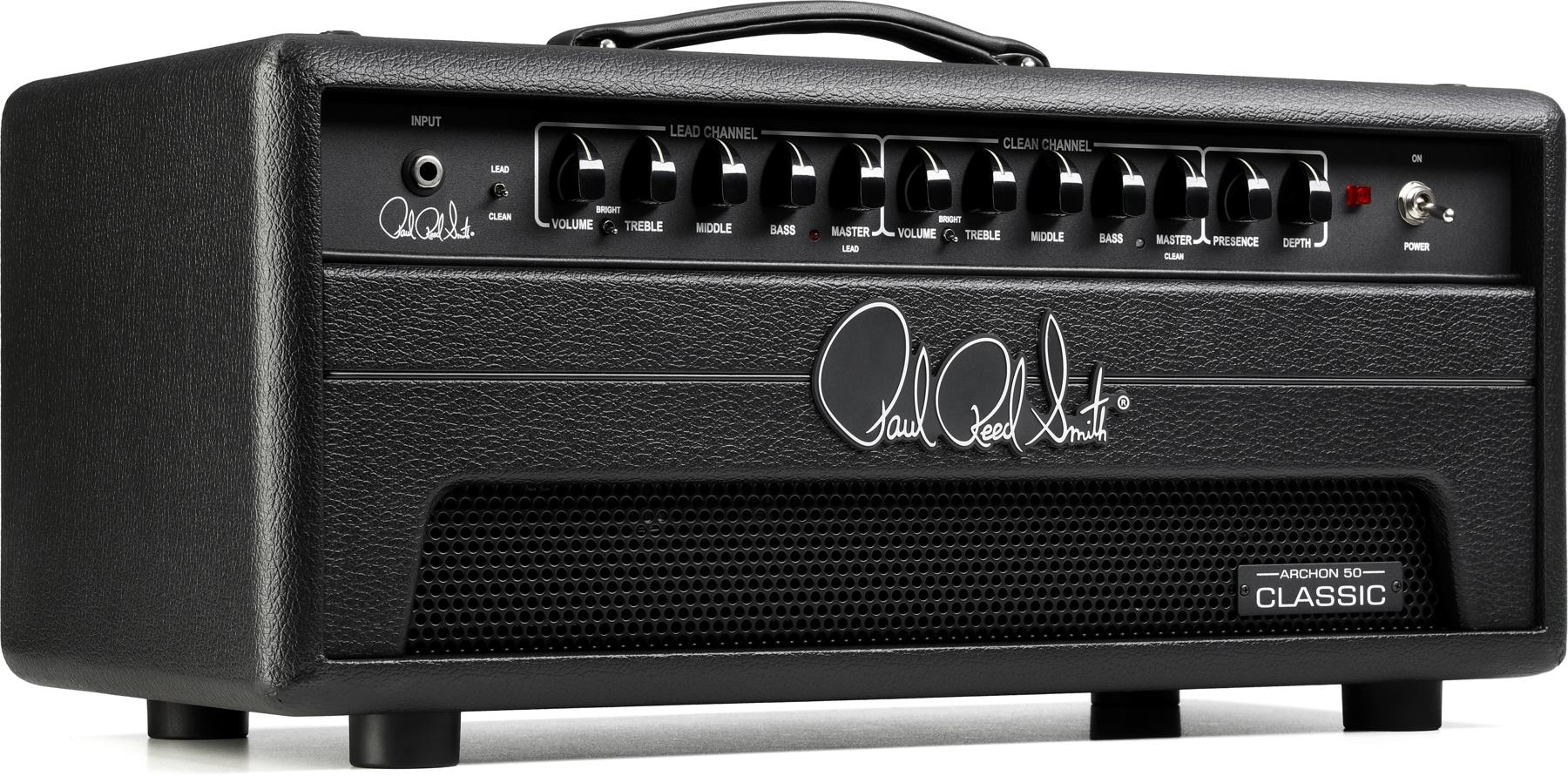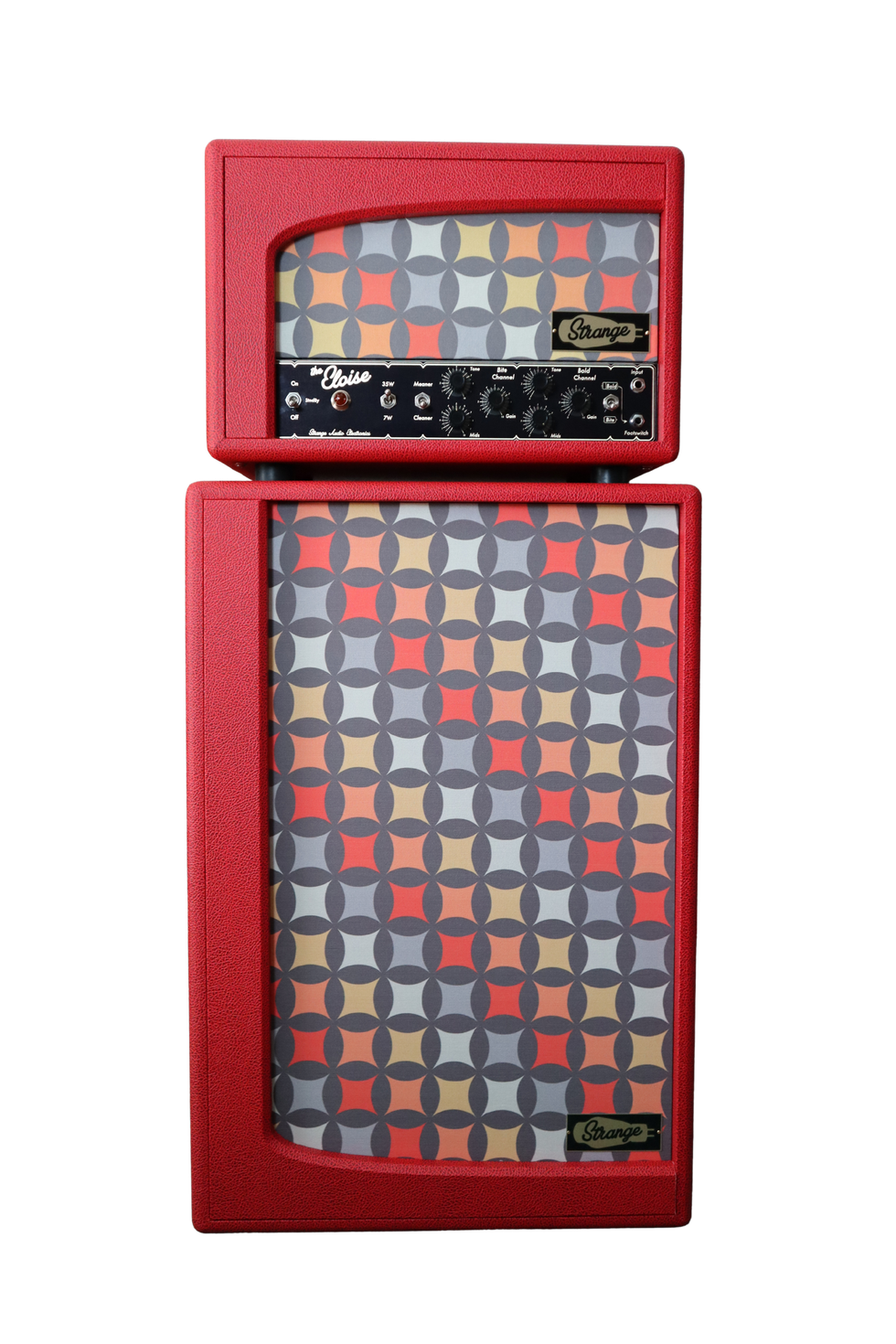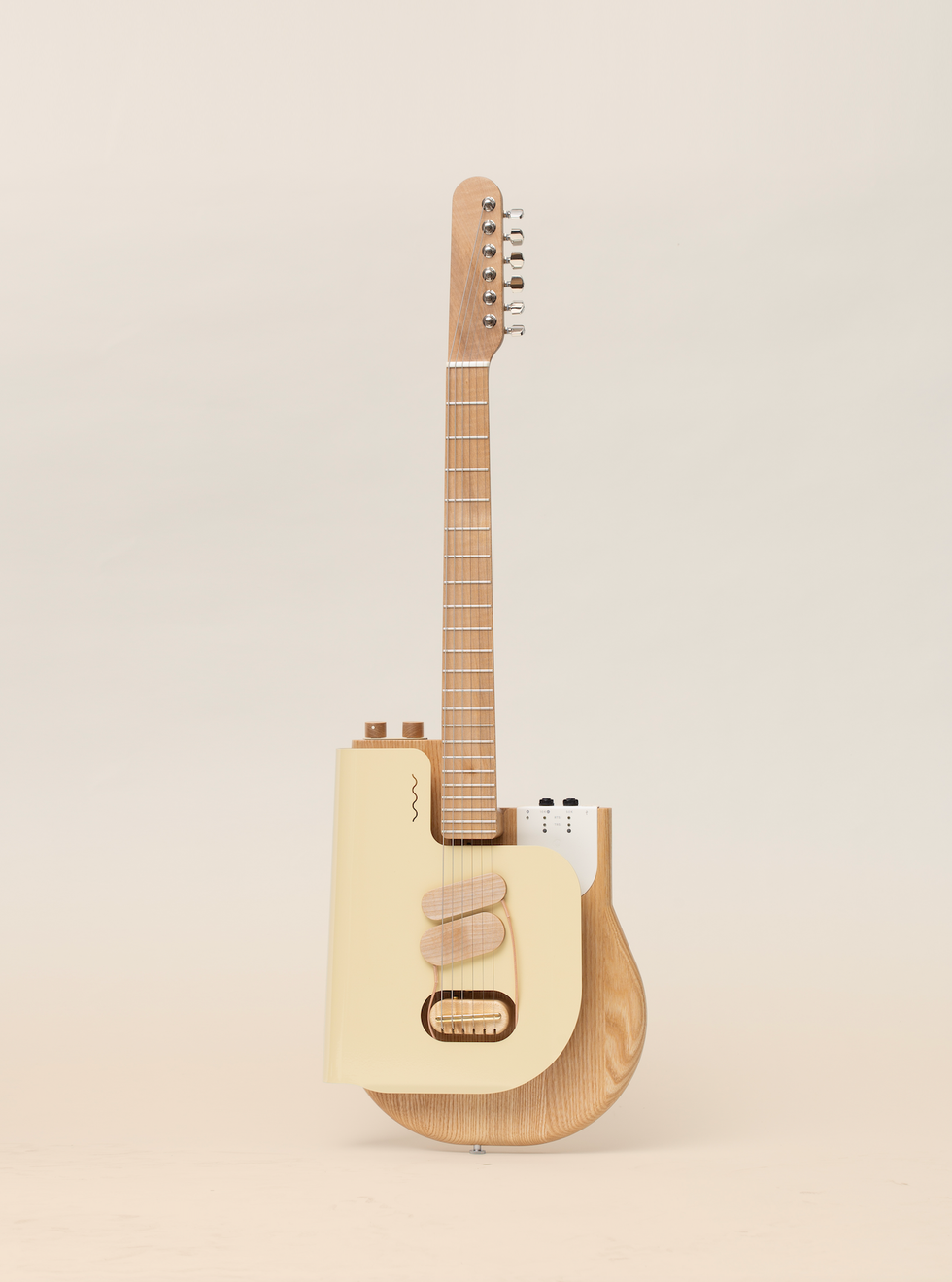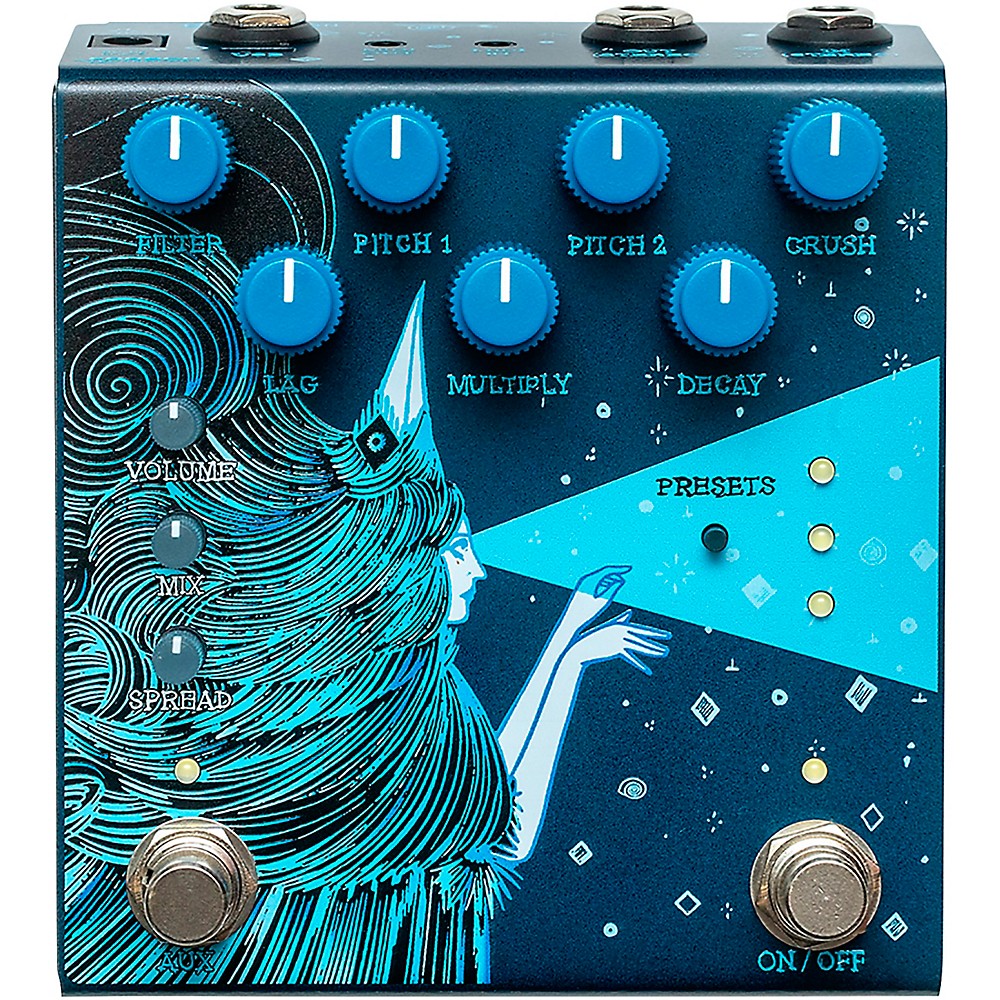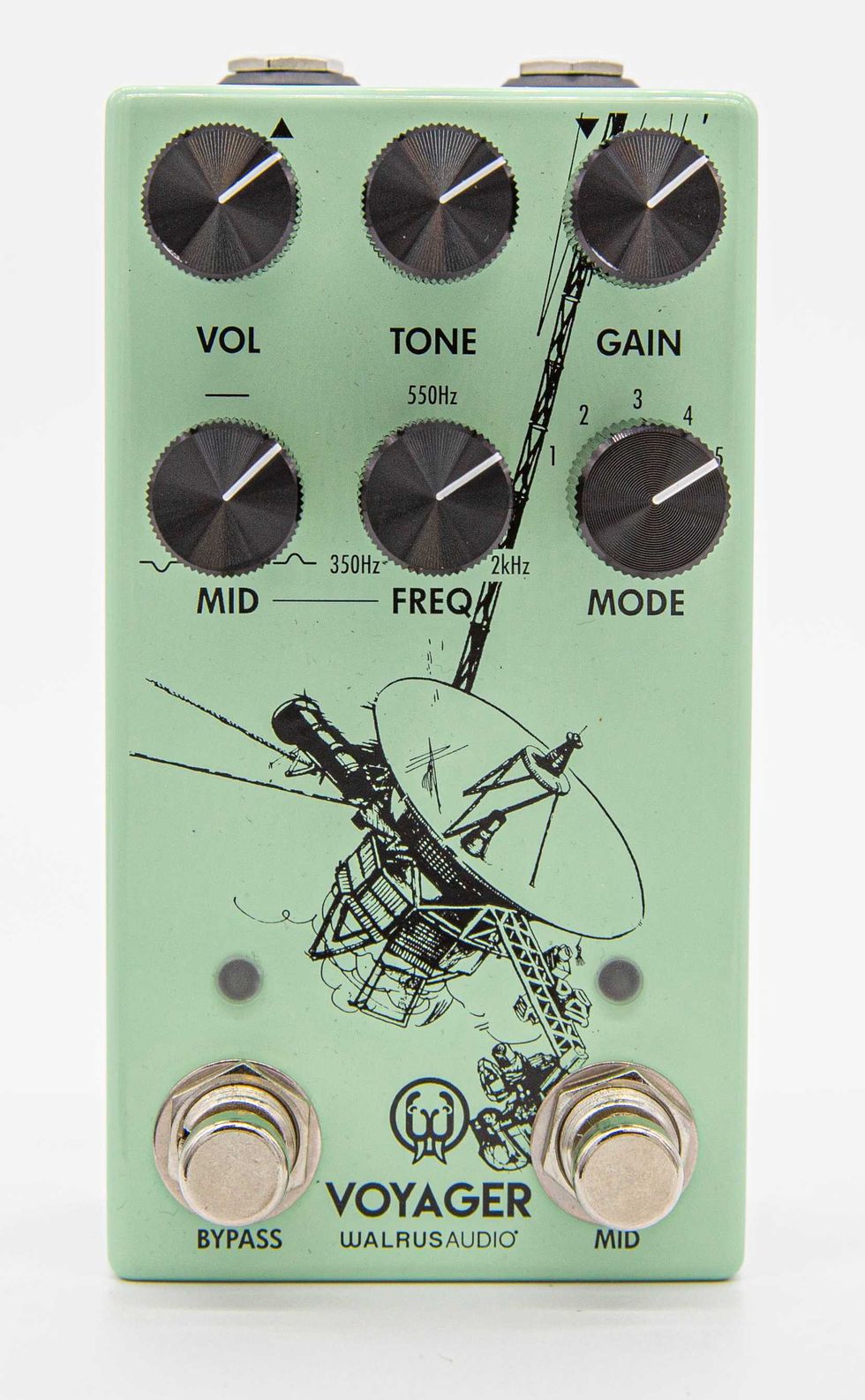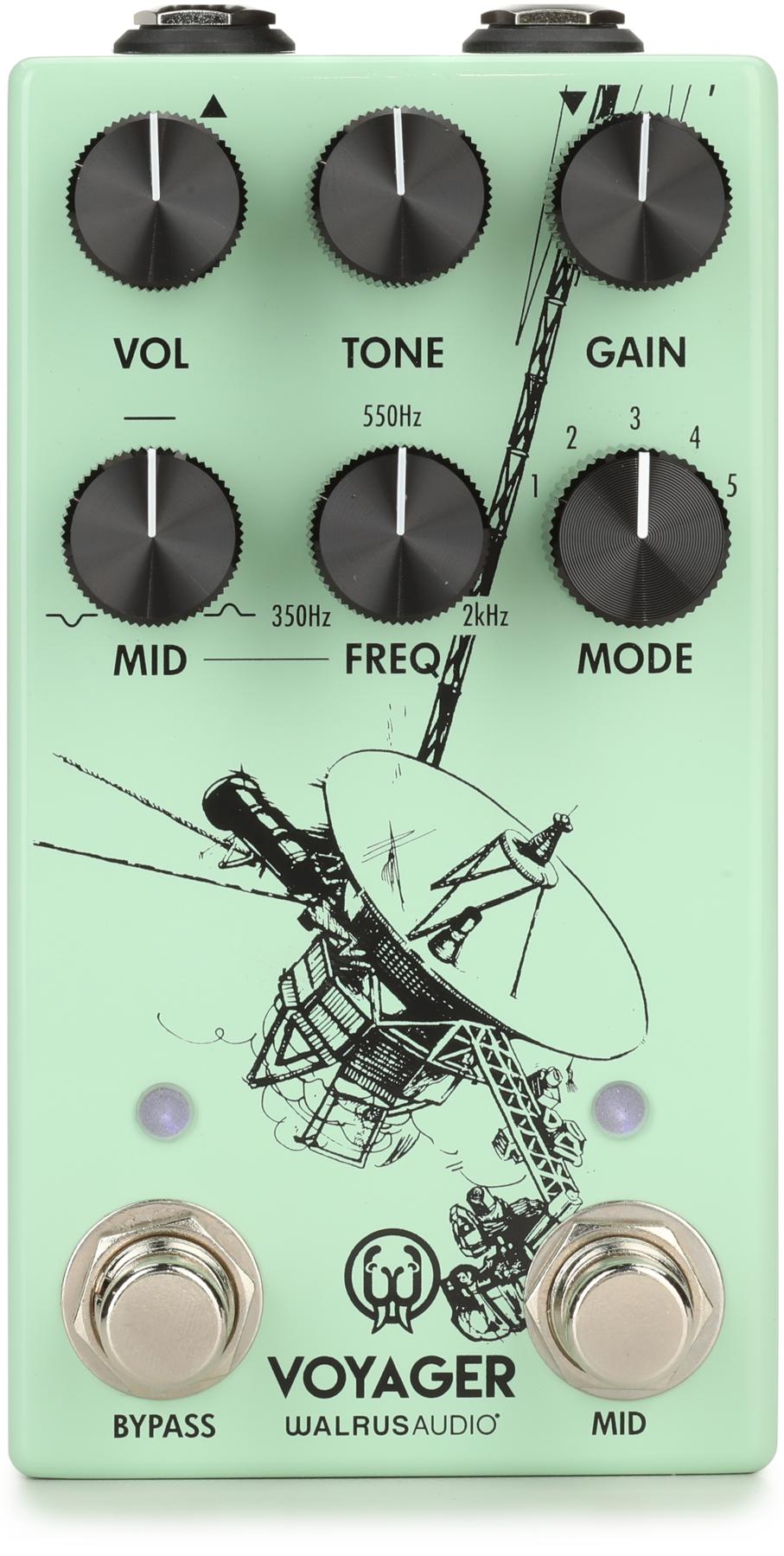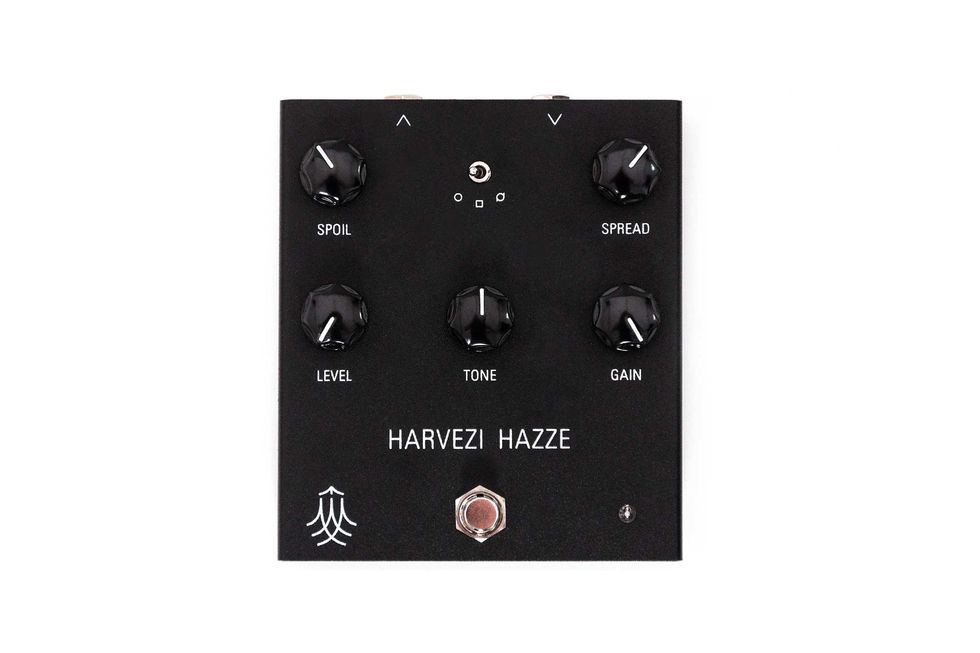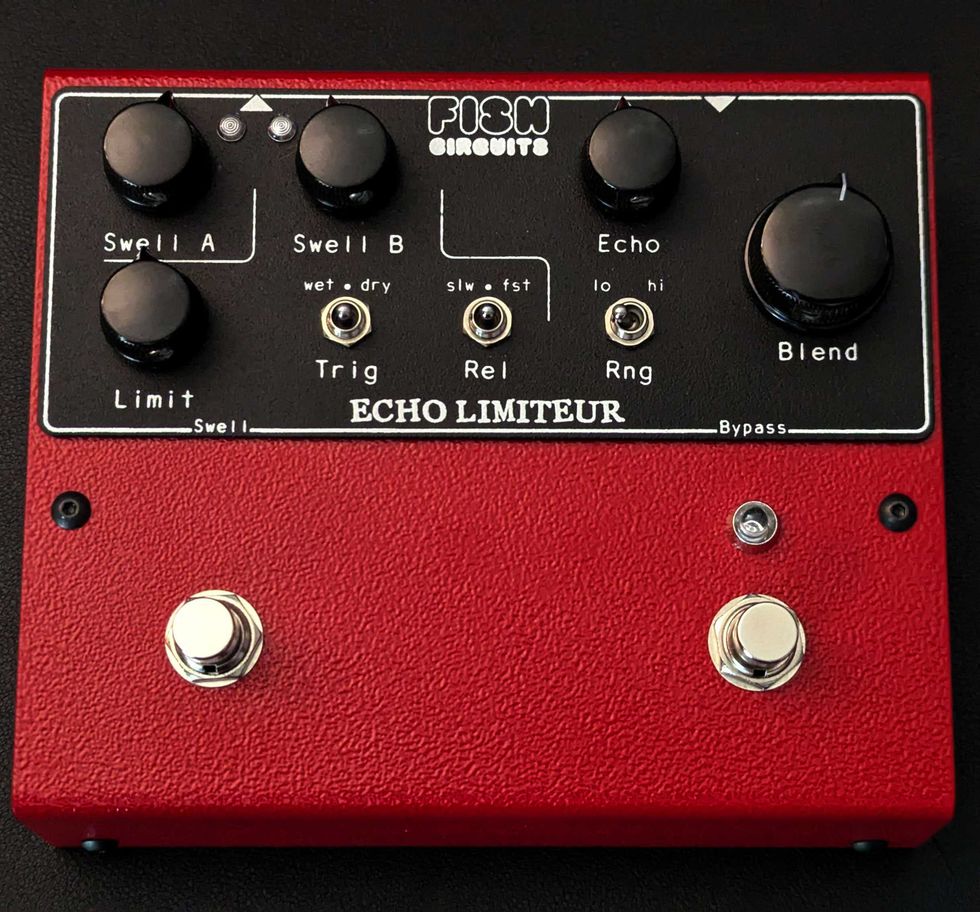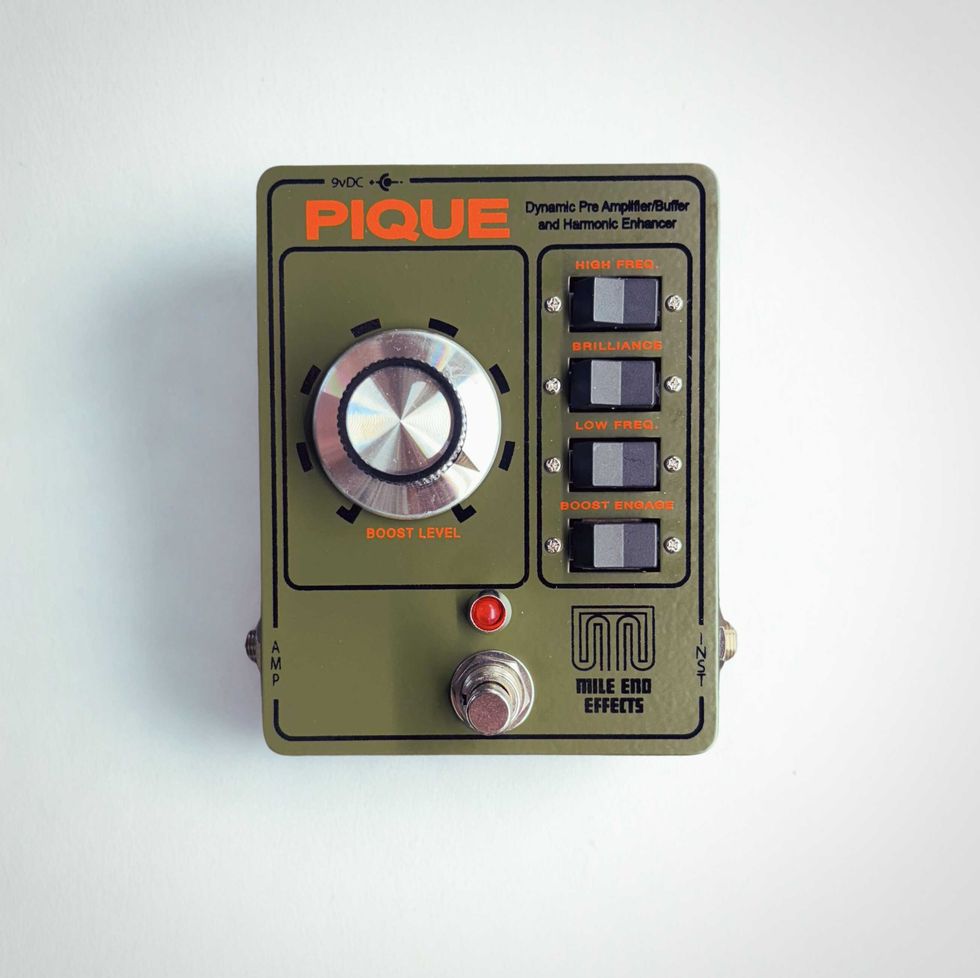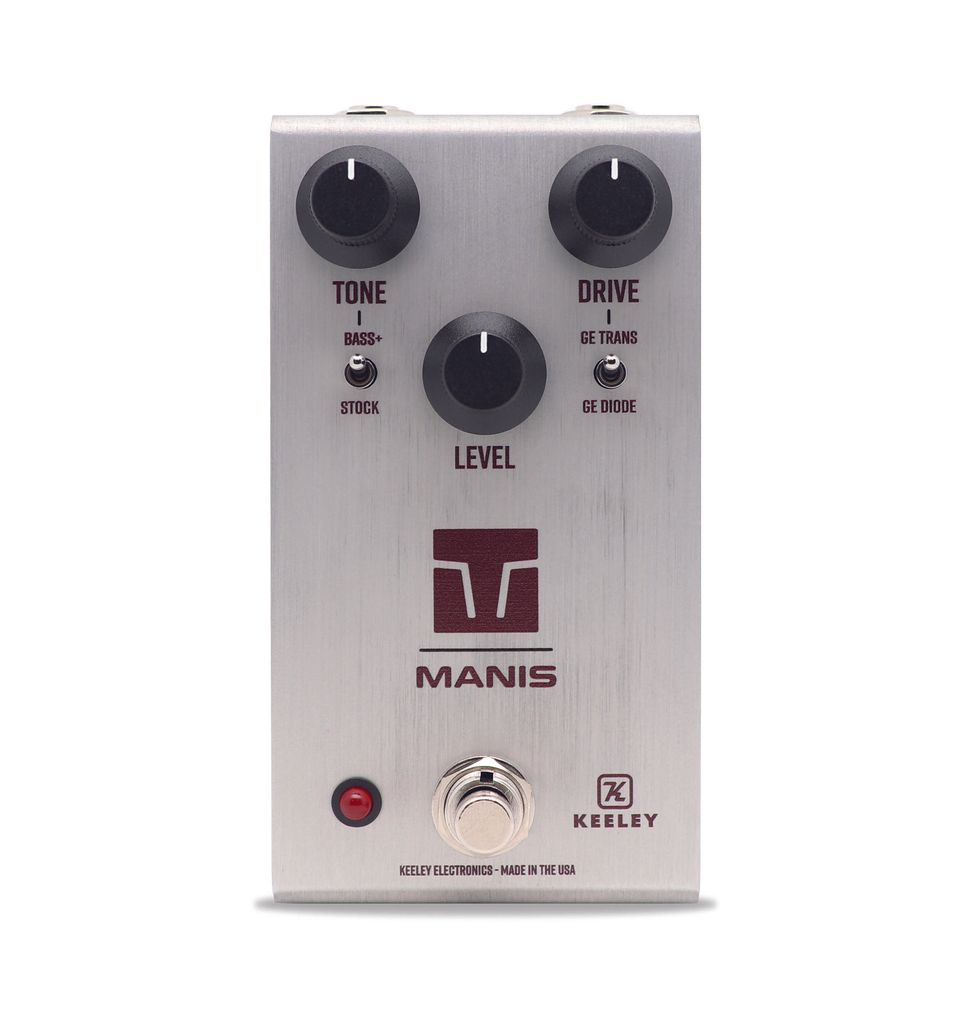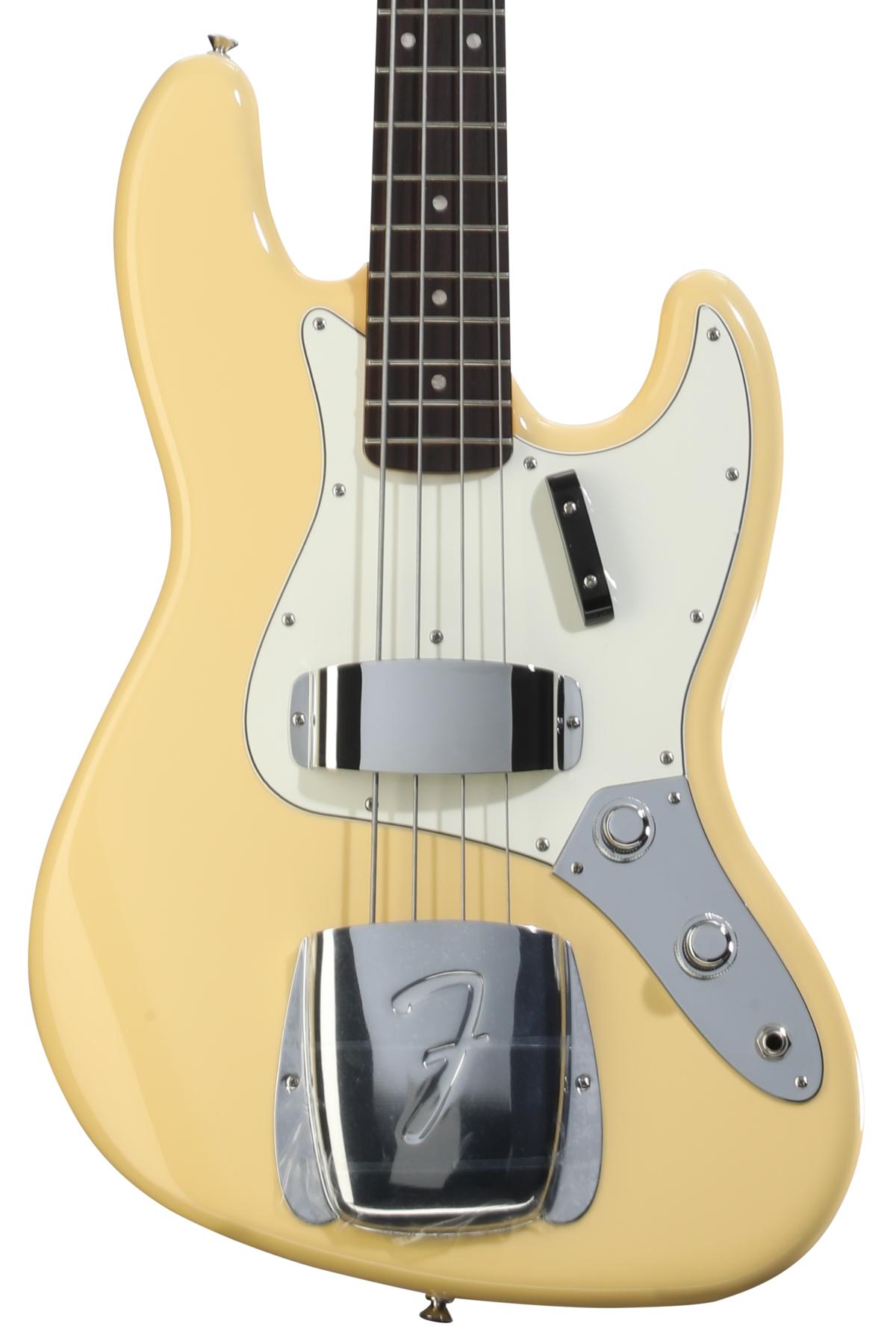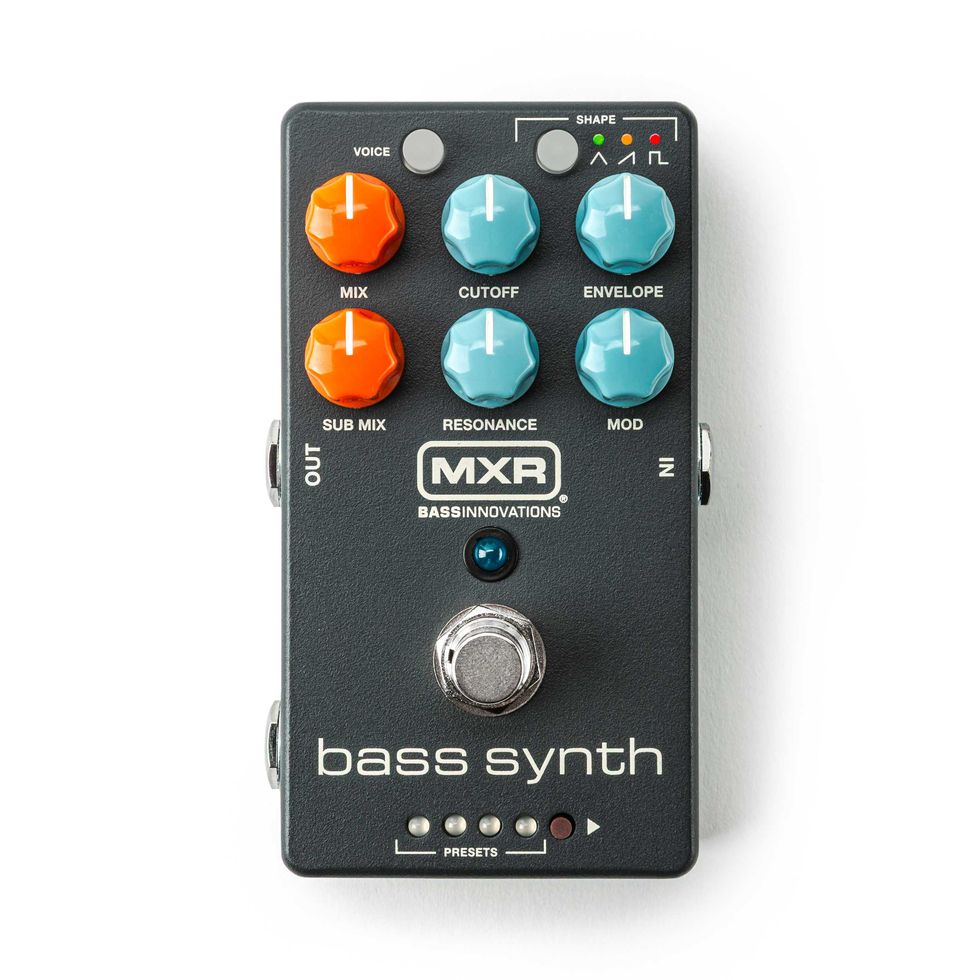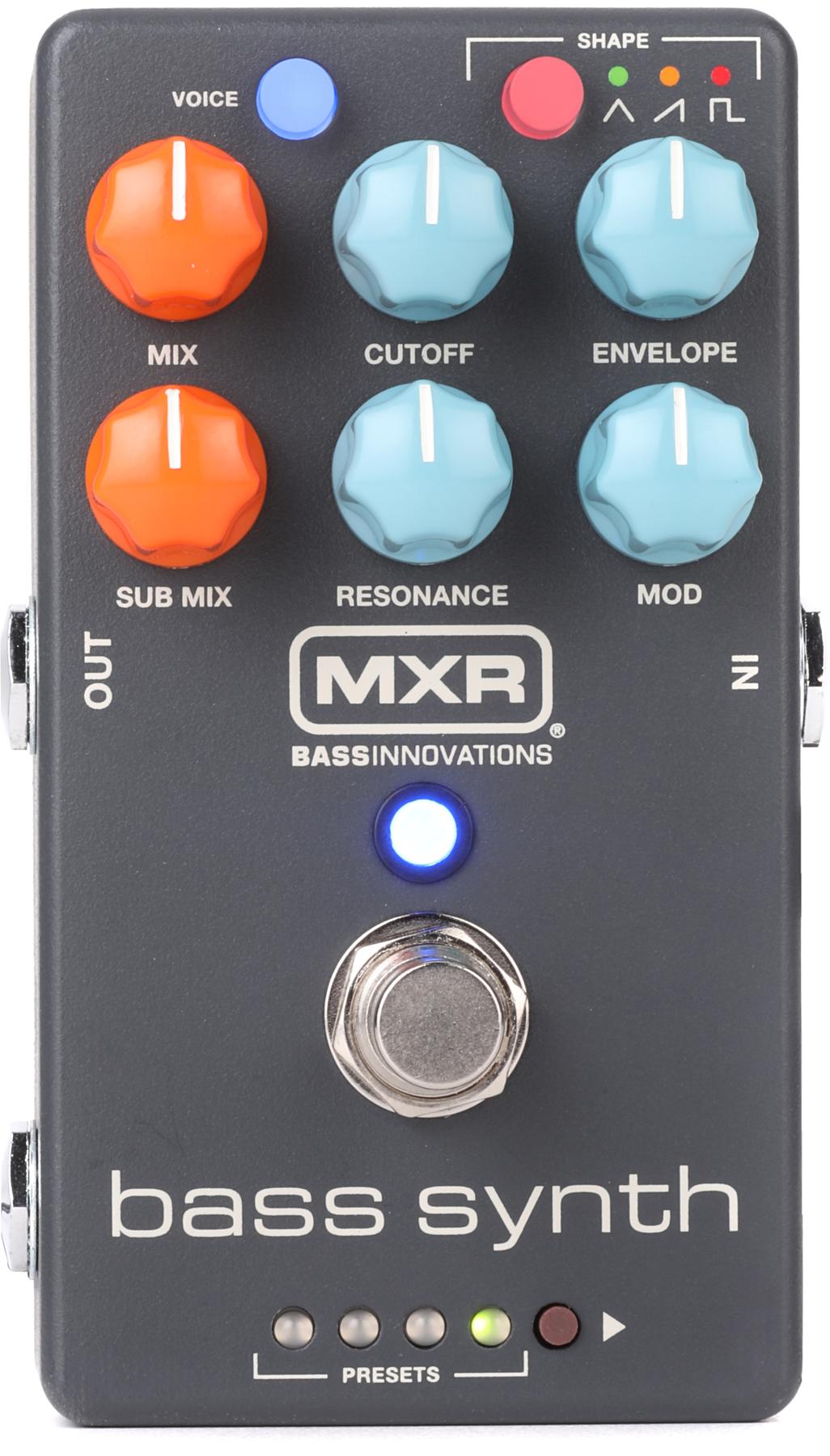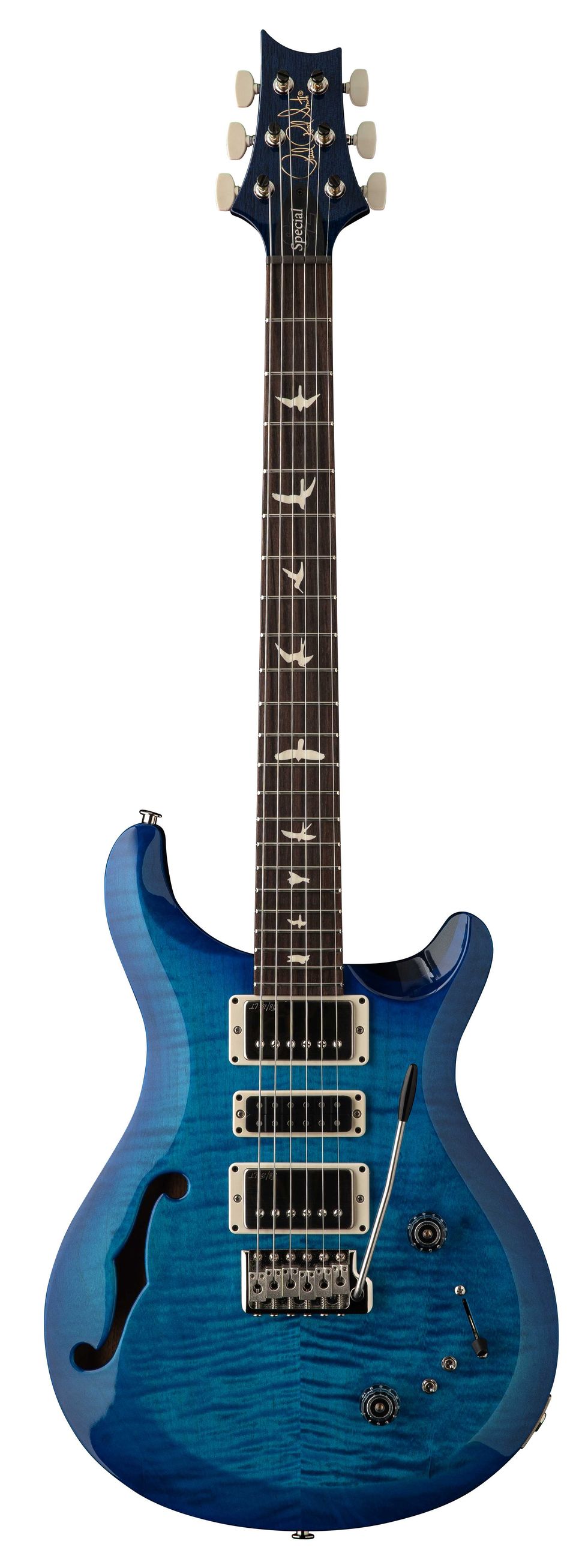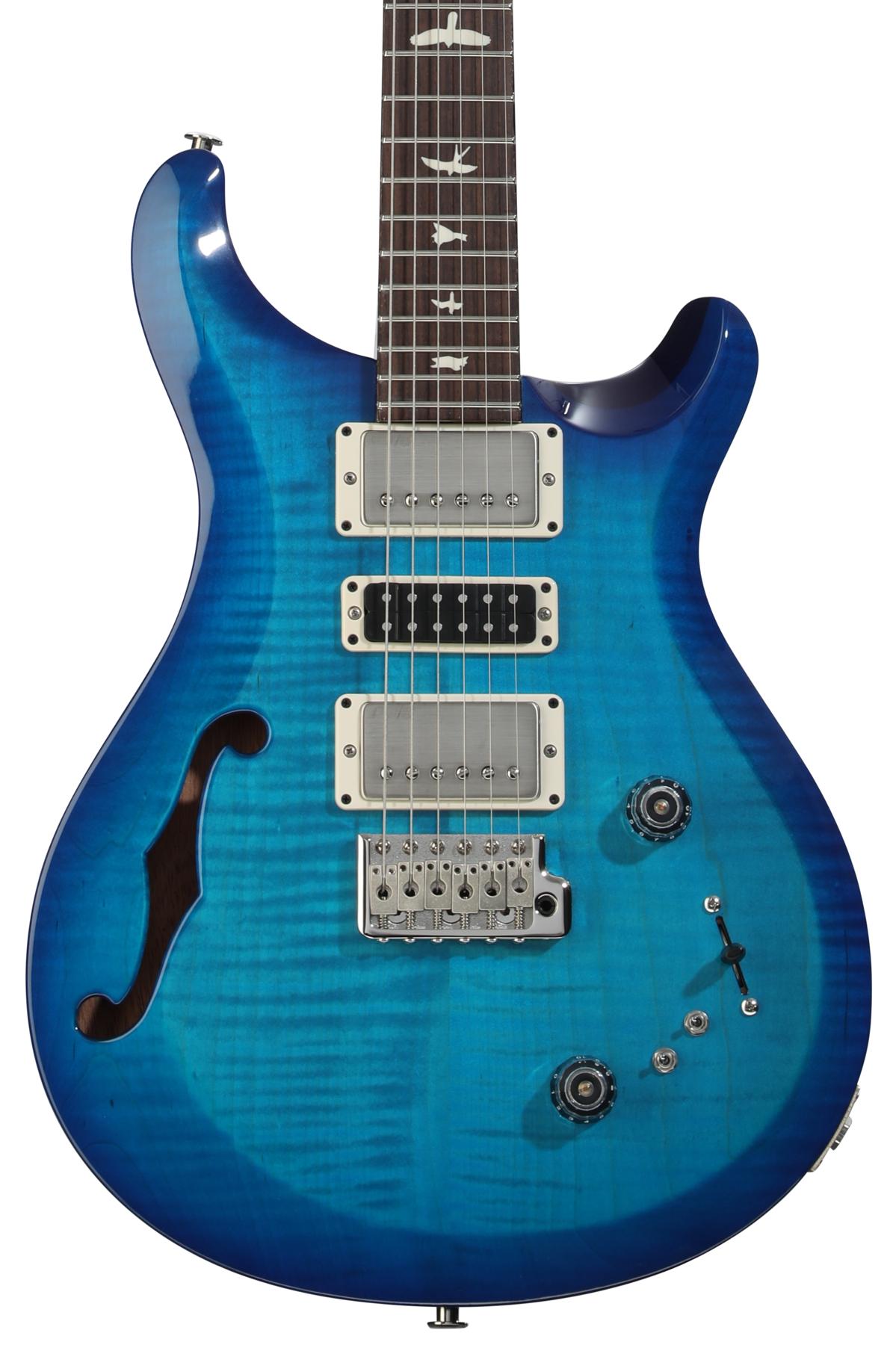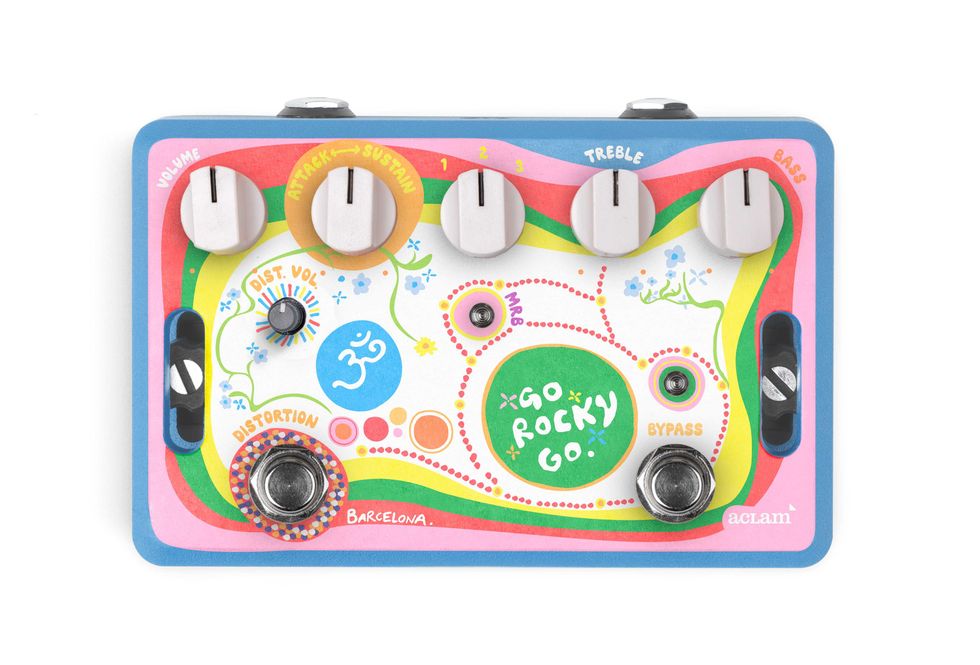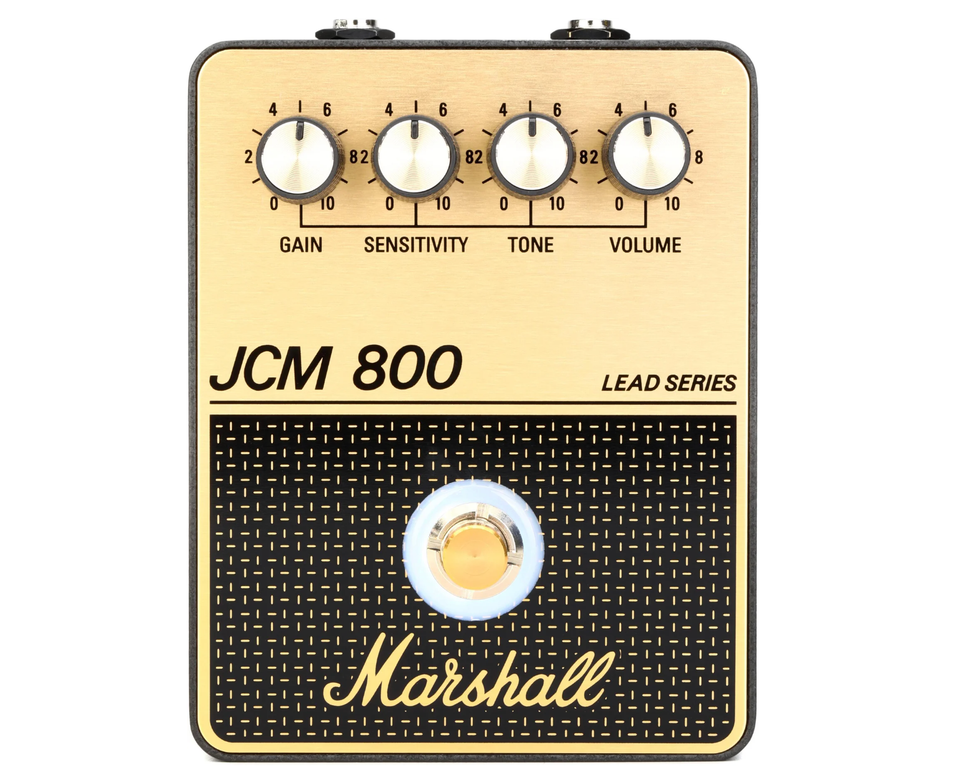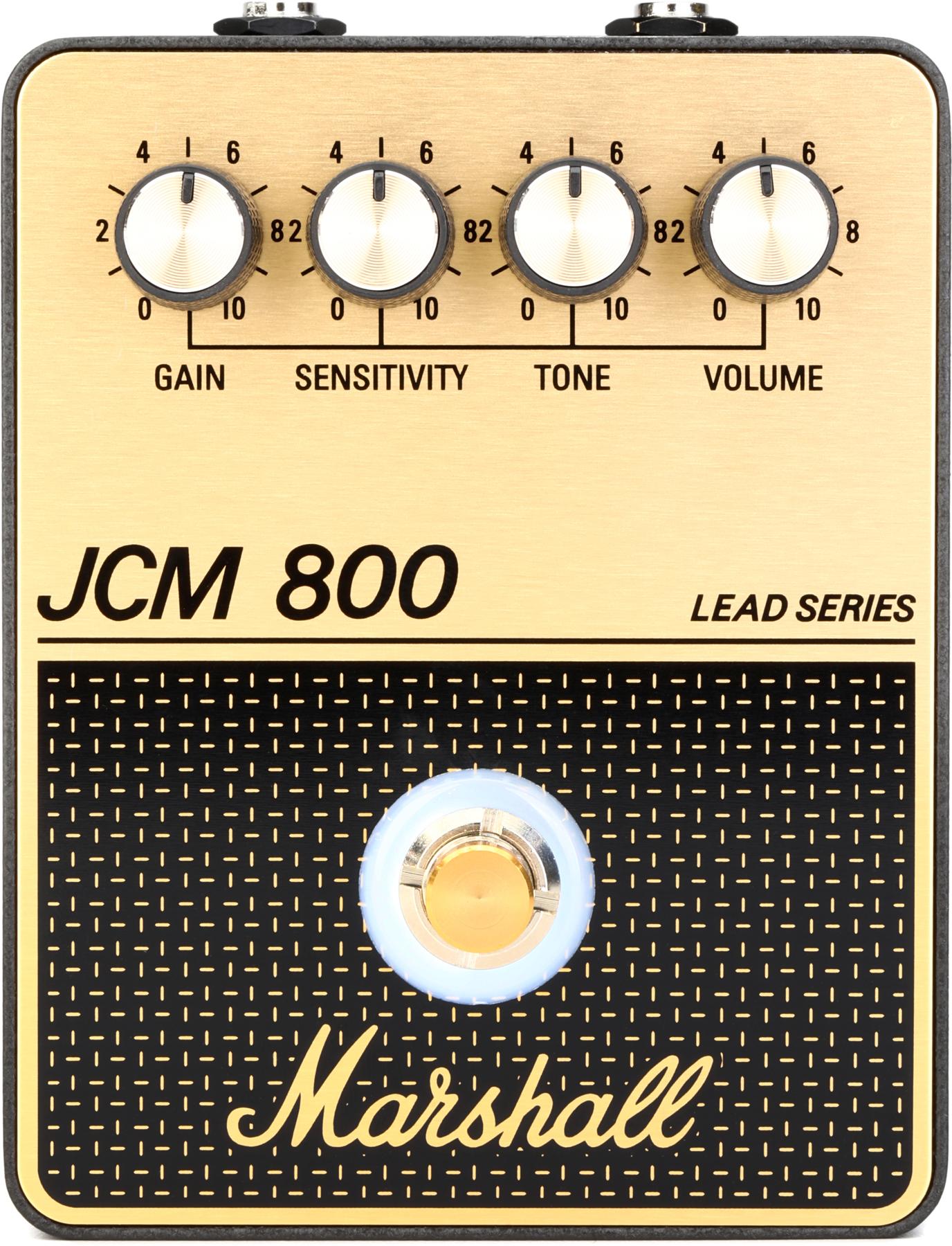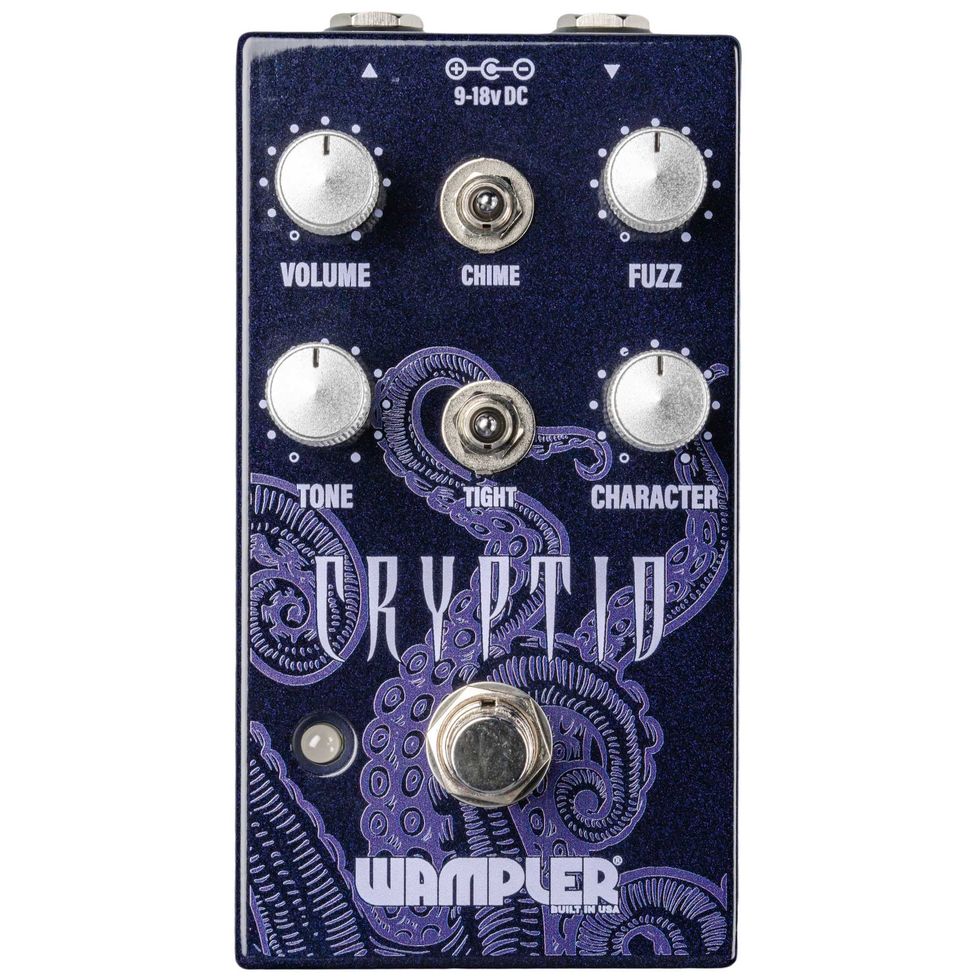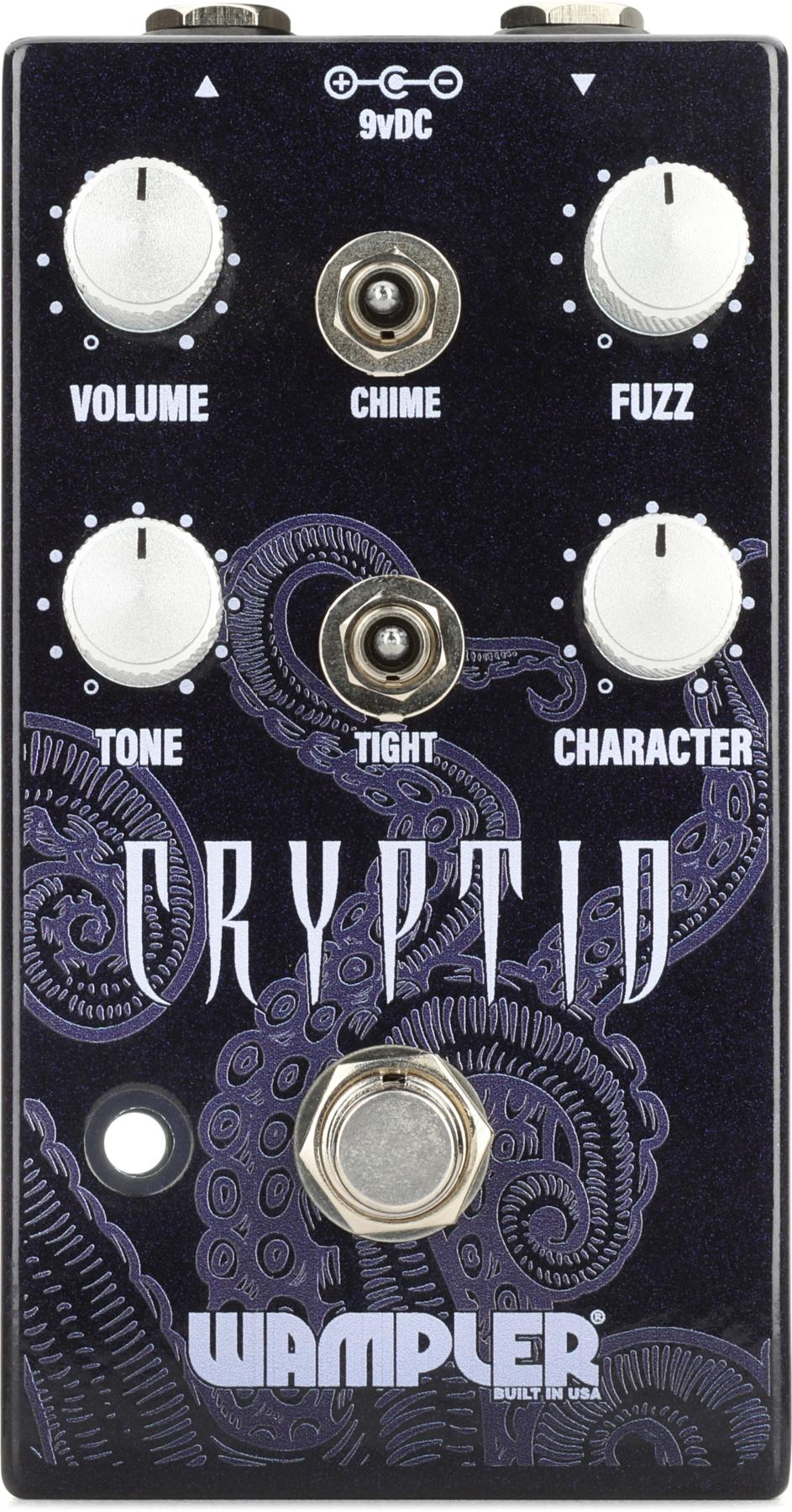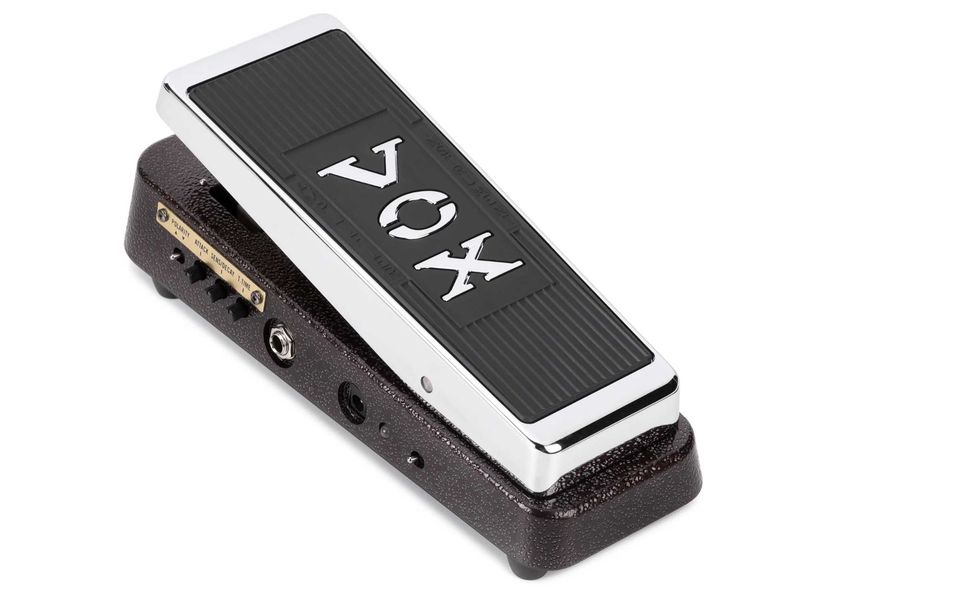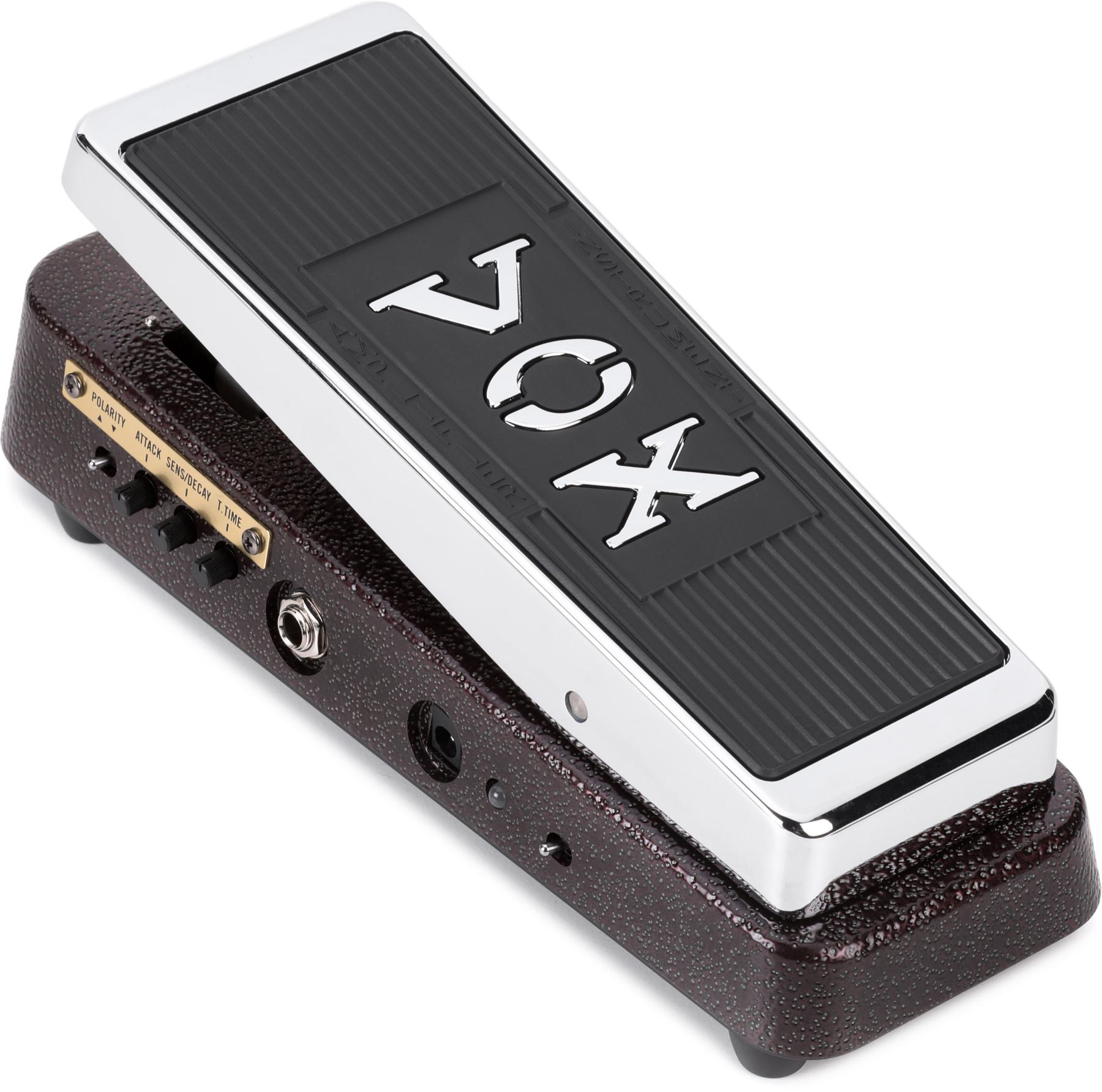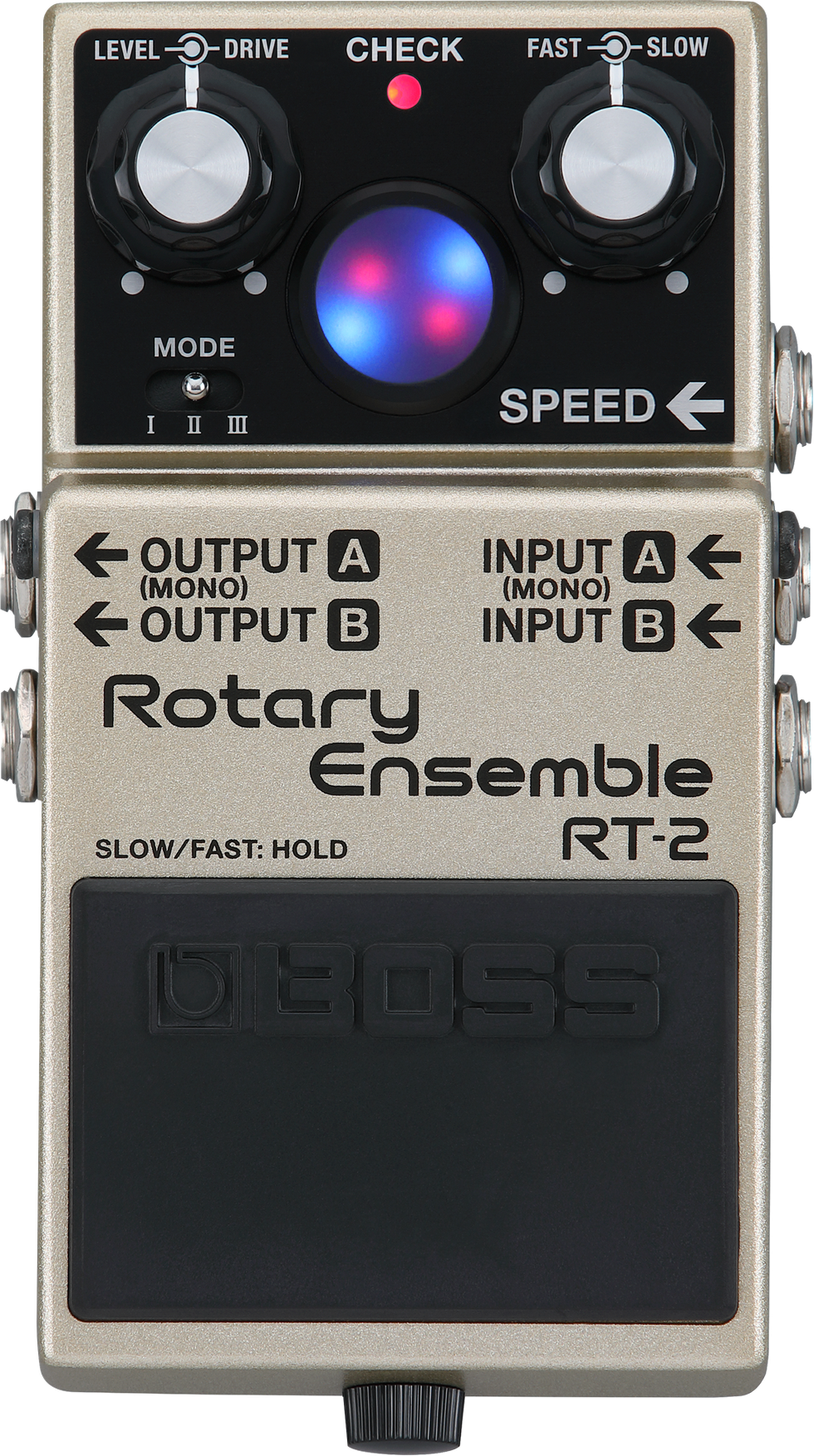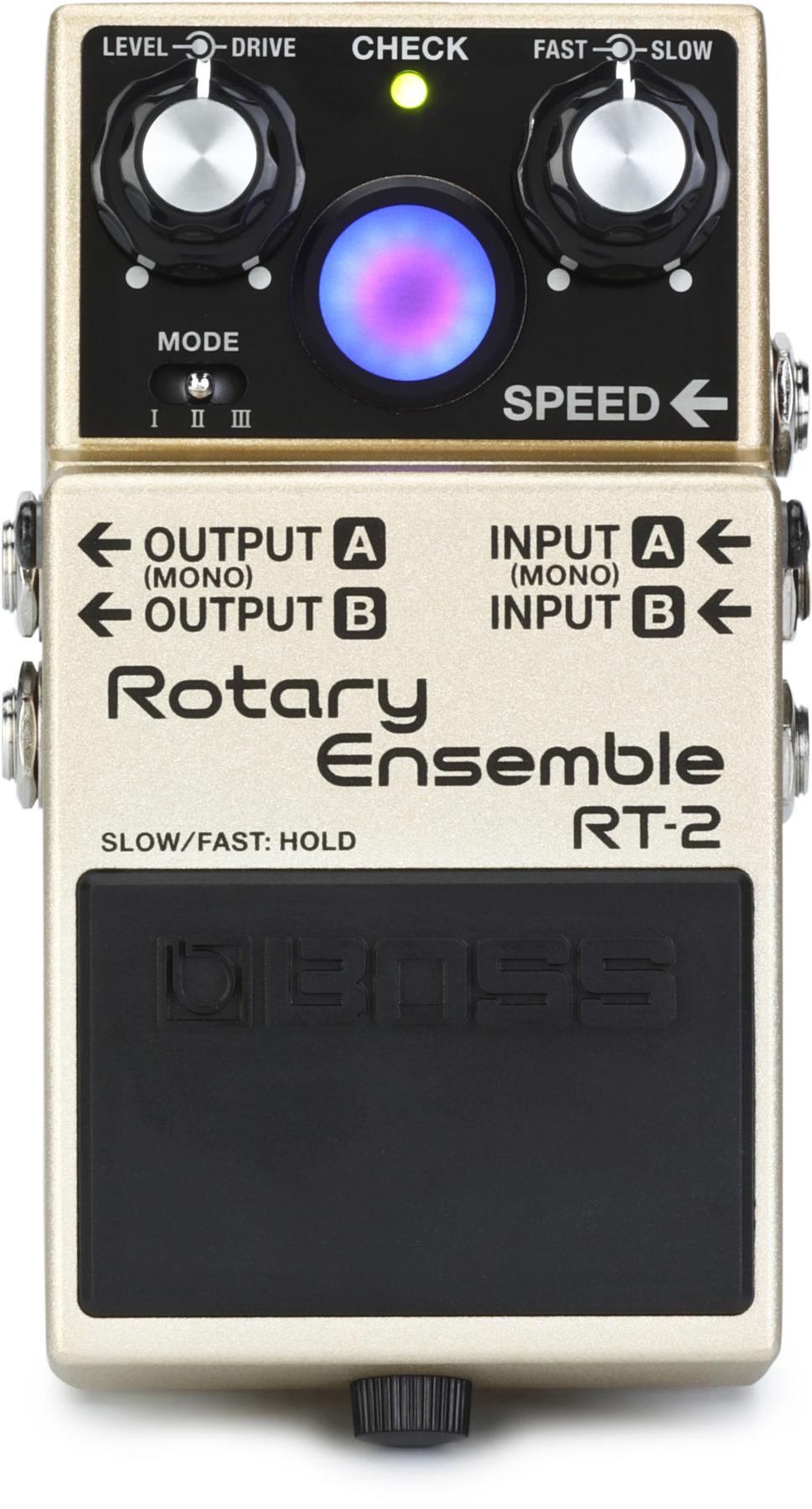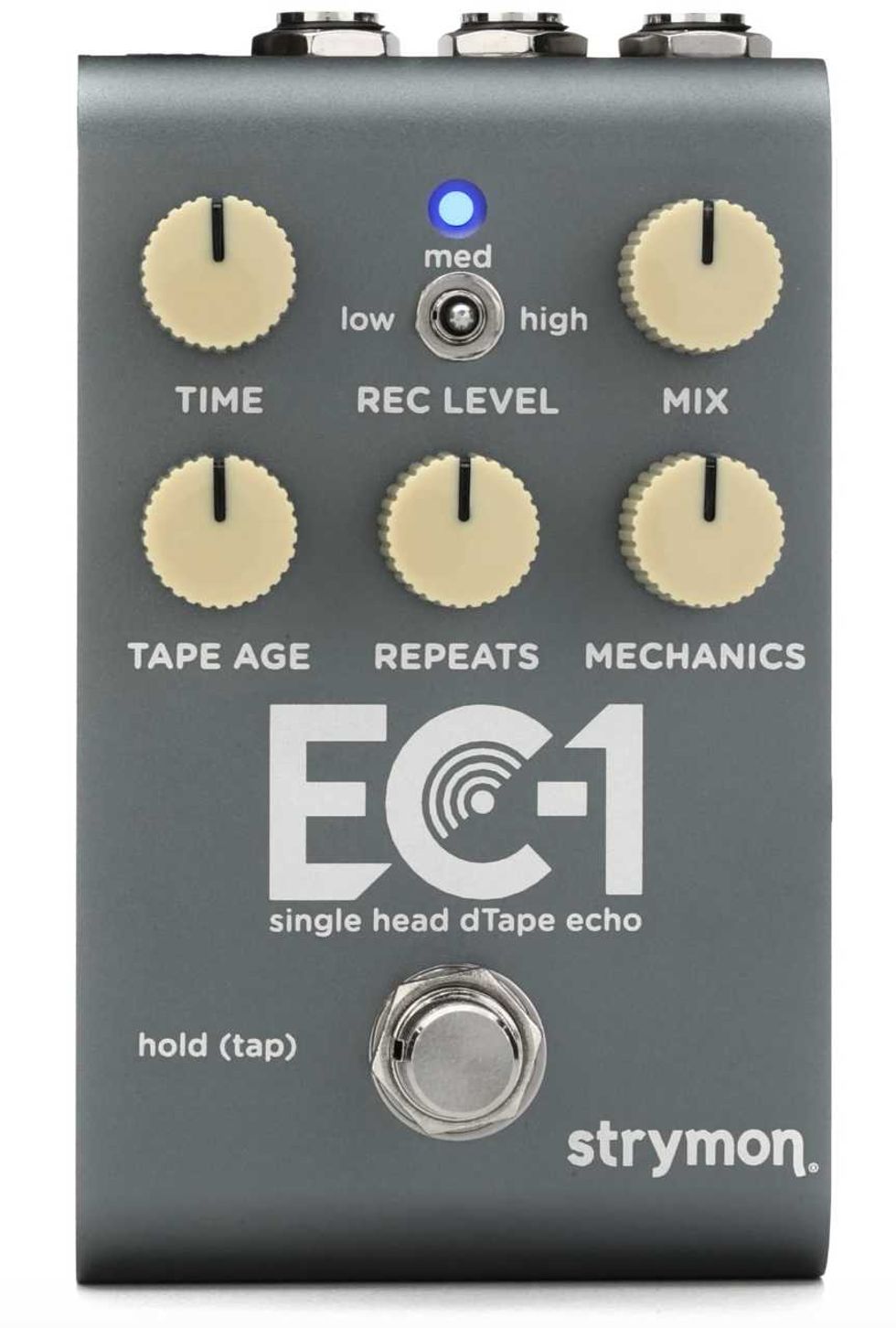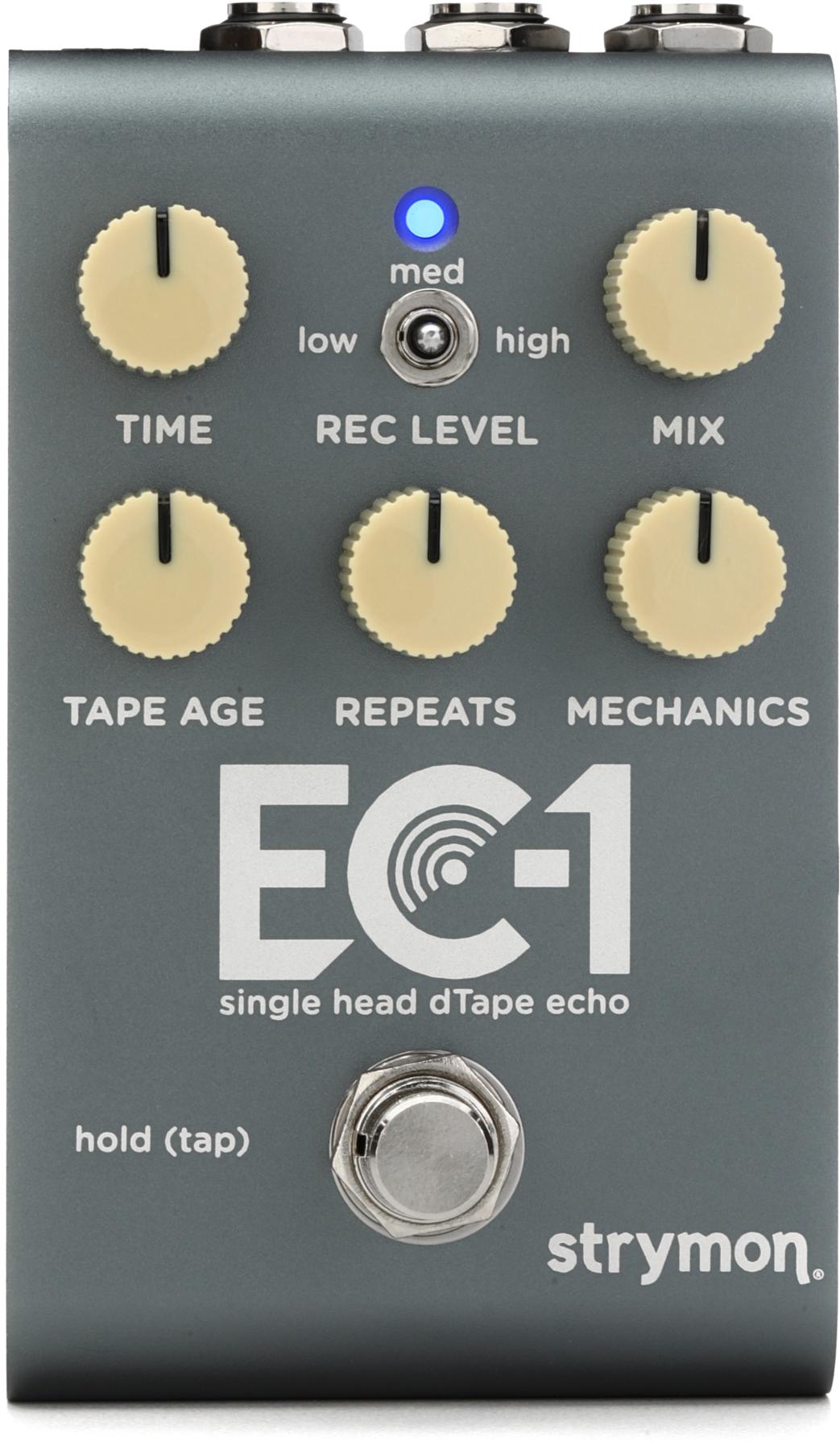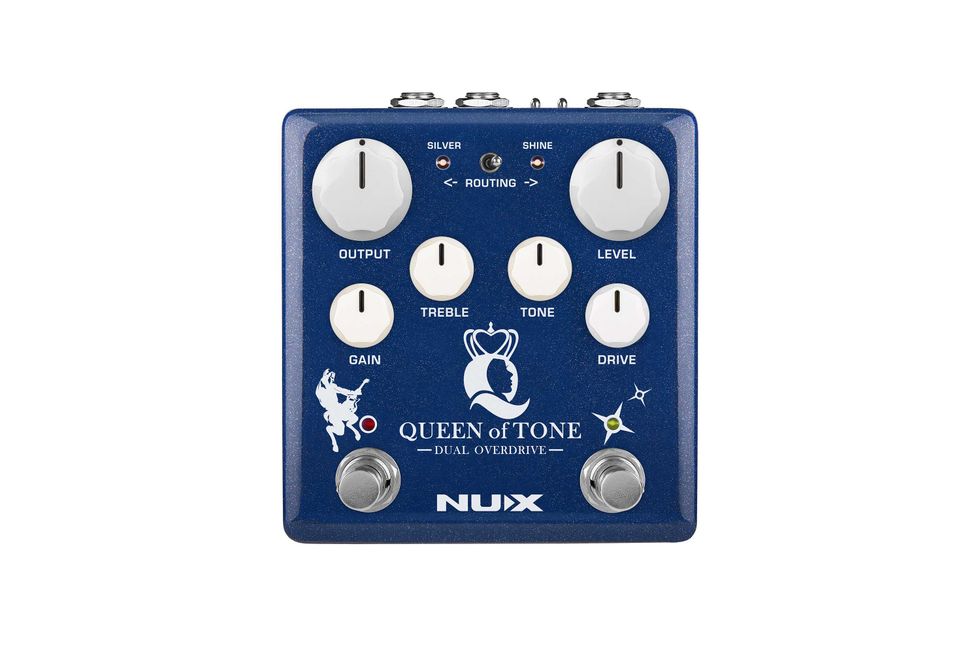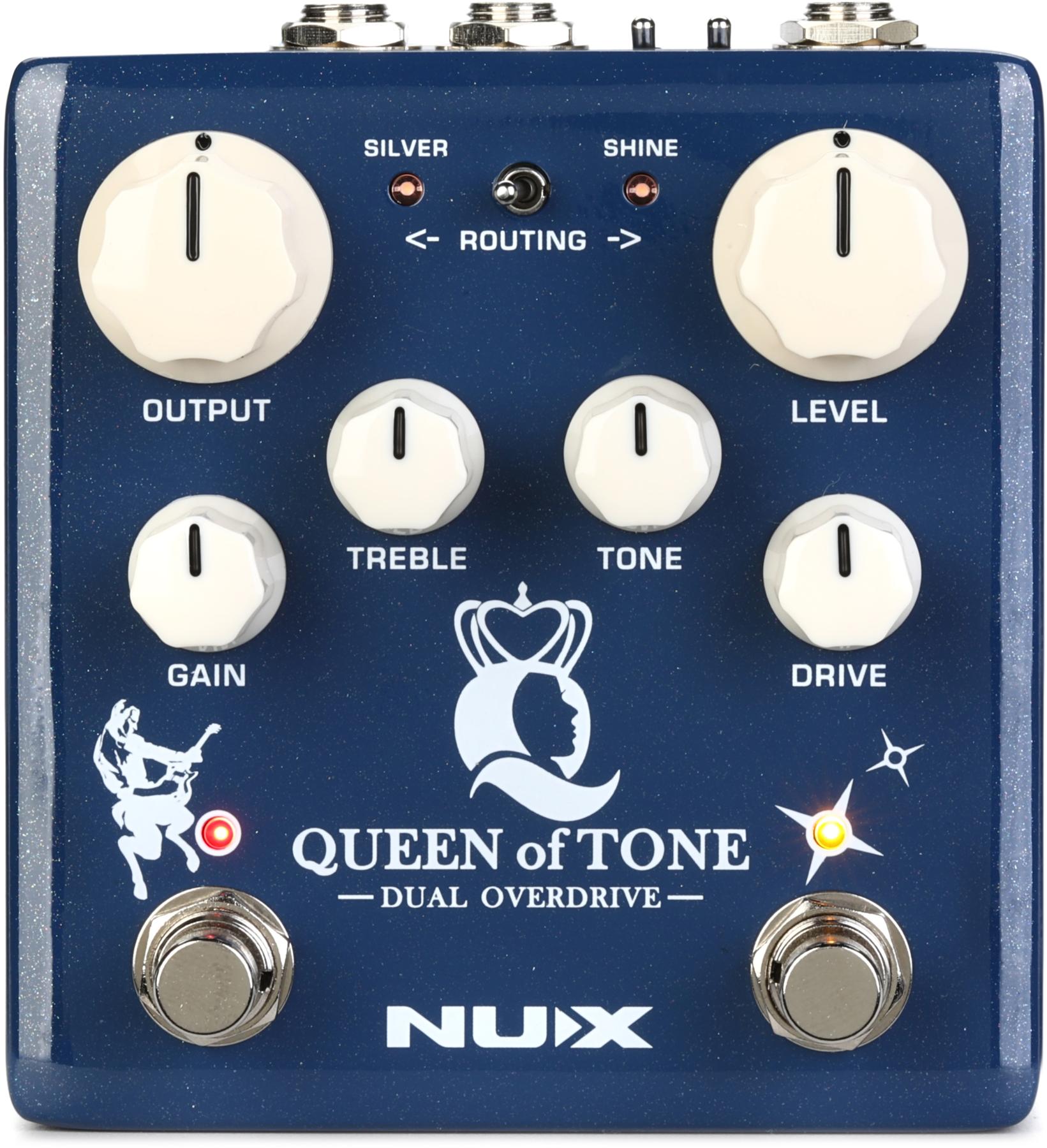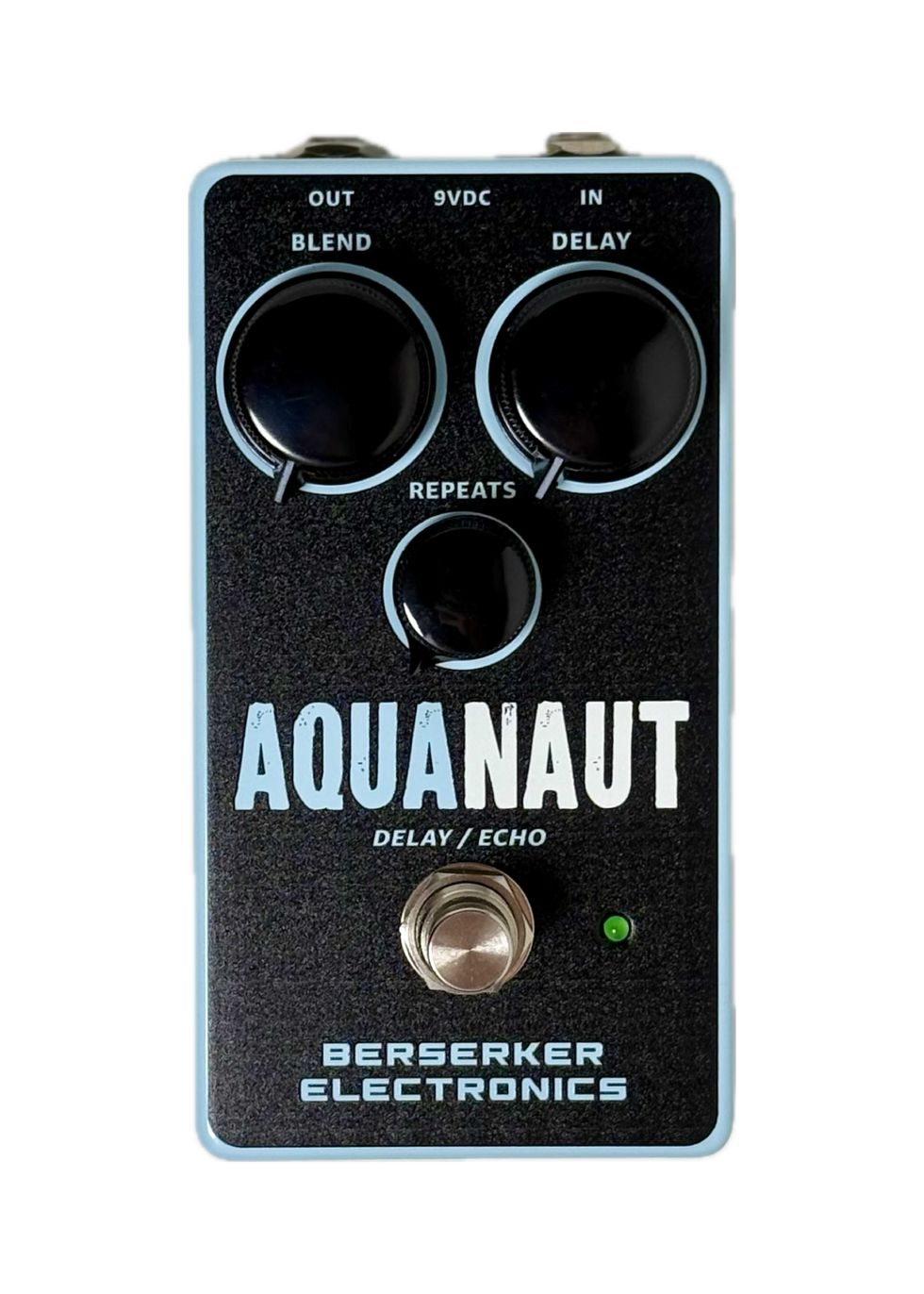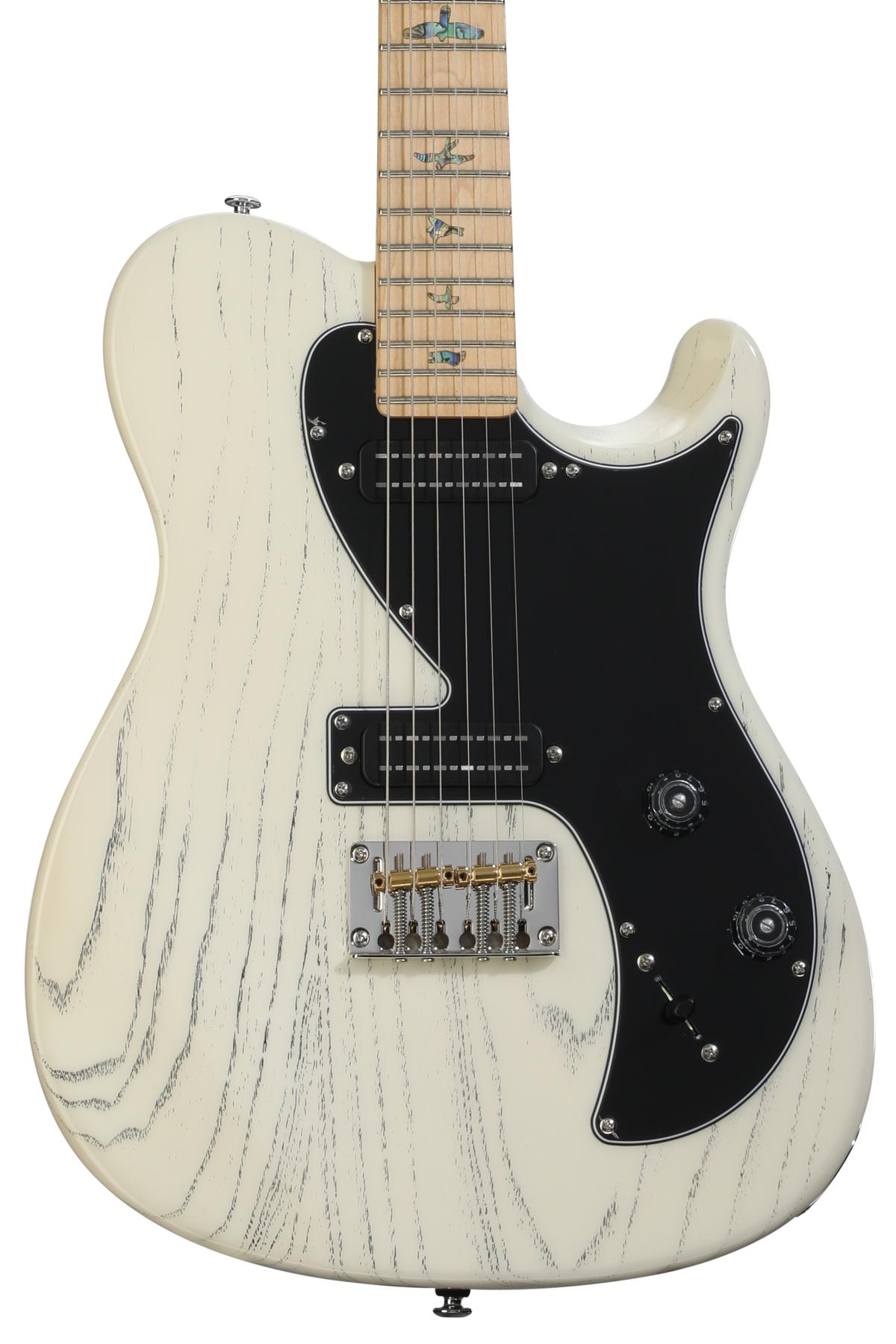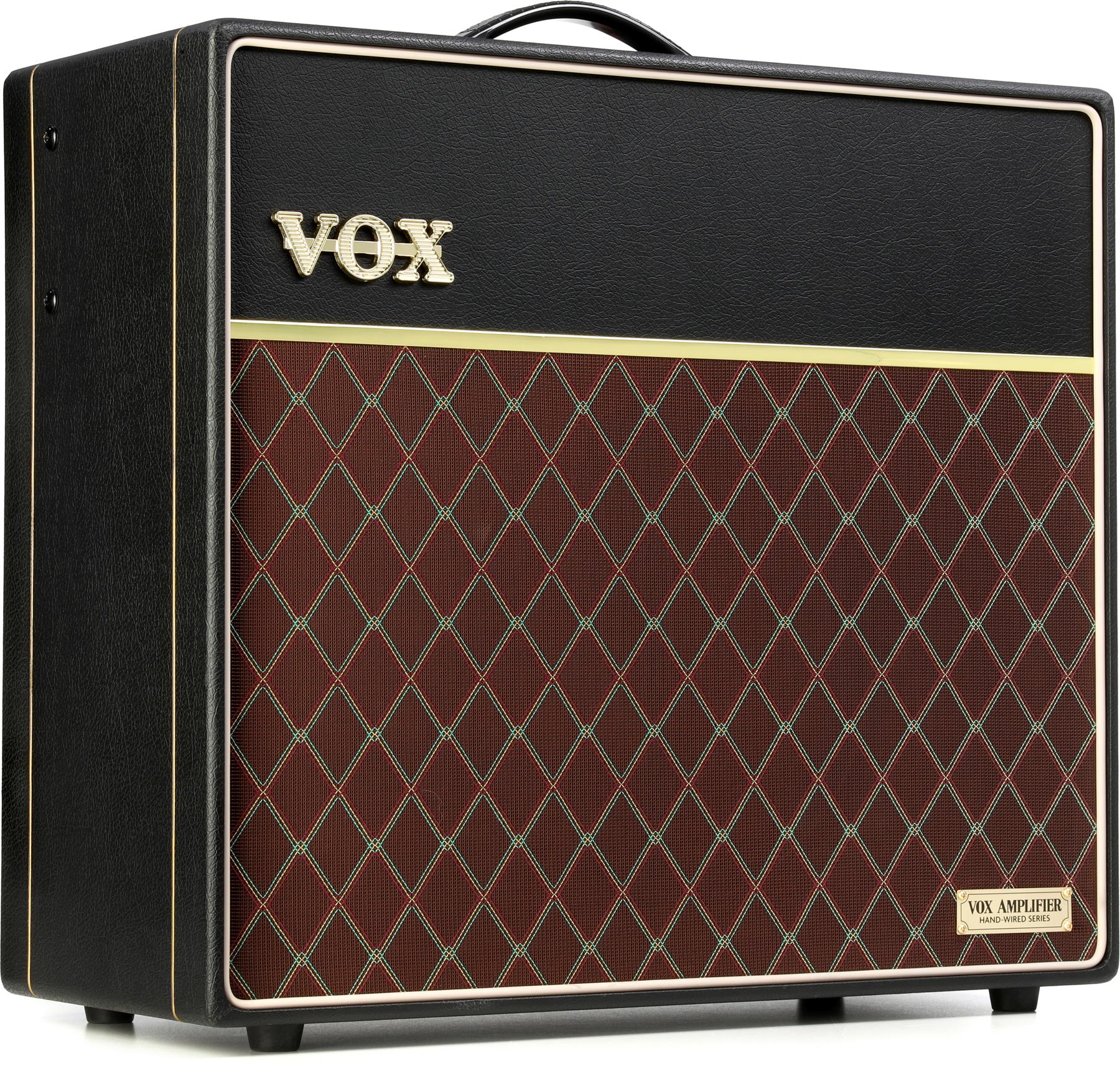Descended from the first Electro-Harmonix pedal ever released, the LPB-1 Linear Power Booster, the new LPB-3 has come a long way from the simple, one-knob unit in a folded-metal enclosure that plugged straight into your amplifier. Now living in Electro-Harmonix’s compact Nano chassis, the LPB-3 Linear Power Booster and EQ boasts six control knobs, two switches, and more gain than ever before.
If 3 Were 6
With six times the controls found on the 1 and 2 versions (if you discount the original’s on/off slider switch,) the LPB-3’s control complement offers pre-gain, boost, mid freq, bass, treble, and mid knobs, with a center detent on the latter three so you can find the midpoint easily. A mini-toggle labeled “max” selects between 20 dB and 33 dB of maximum gain, and another labeled “Q” flips the resonance of the mid EQ between high and low. Obviously, this represents a significant expansion of the LPB’s capabilities.
More than just a booster with a passive tone, the LPB-3 boasts a genuine active EQ stage plus parametric midrange section, comprising the two knobs with shaded legends, mid freq and mid level. The gain stages have also been reimagined to include a pre-gain stage before the EQ, which enables up to 20 dB of input gain. The boost stage that follows the EQ is essentially a level control with gain to allow for up to 33 dB of gain through the LPB-3 when the “max” mini toggle is set to 33dB
A slider switch accessible inside the pedal selects between buffered or true bypass for the hard-latch footswitch. An AC adapter is included, which supplies 200mA of DC at 9.6 volts to the center-negative power input, and EHX specifies that nothing supplying less than 120mA or more than 12 volts should be used. There’s no space for an internal battery.
Power-Boosted
The LPB-3 reveals boatloads of range that betters many linear boosts on the market. There’s lots of tone-shaping power here. Uncolored boost is available when you want it, and the preamp gain knob colors and fattens your signal as you crank it up—even before you tap into the massive flexibility in the EQ stage.
“The preamp gain knob colors and fattens your signal as you crank it up—even before you tap into the massive flexibility in the EQ stage.”
I found the two mid controls work best when used judiciously, and my guitars and amps preferred subtle changes pretty close to the midpoint on each. However, there are still tremendous variations in your mid boost (or scoop, for that matter) within just 15 or 20 percent range in either direction from the center detent. Pushing the boost and pre-gain too far, particularly with the 33 dB setting engaged, can lead to some harsh sounds, but they are easy to avoid and might even be desirable for some users that like to work at more creative extremes.
The Verdict
The new LPB-3 has much, much more range than its predecessors, providing flexible preamp, boost, and overdrive sounds that can be reshaped in significant ways via the powerful EQ. It gives precise tone-tuning flexibility to sticklers that like to match a guitar and amp to a song in a very precise way, but also opens up more radical paths for experimentalists. That it does all this at a $129 price is beyond reasonable.




